Namibia - The Most Amazing Night Sky, But So Much More
Namibia was the first destination for my two-month-seven-country Africa trip, and maybe the one I was most excited about.

This part of the journey was organised by https://www.stefanliebermann.de, Sony Ambassador for Germany as a 12 day workshop in collaboration with Richard Morsbach, a local tour guide.
The trip was focused on astrophotography, as Namibia has some of the best dark skies in the world and the Milky Way was visible all night during new moon. We did however also have the opportunity to take some daylight cityscape, sunrise and sunset, wildlife, and landscape images.
Namibia is incredible and definitely a destination I’d come back to. Read on to find out what you can see in this country, and the photos I captured to document it.
You can also head over to my Instagram (www.instagram.com/djflore) and check my Story Highlights for a bit of background info.
The Quiver Tree Forest
Our first destination after flying into Windhoek was the Quiver Tree Forest, north-east of Keetmanshop, where we arrived just in time for sunset after a 5h drive and lunch break.
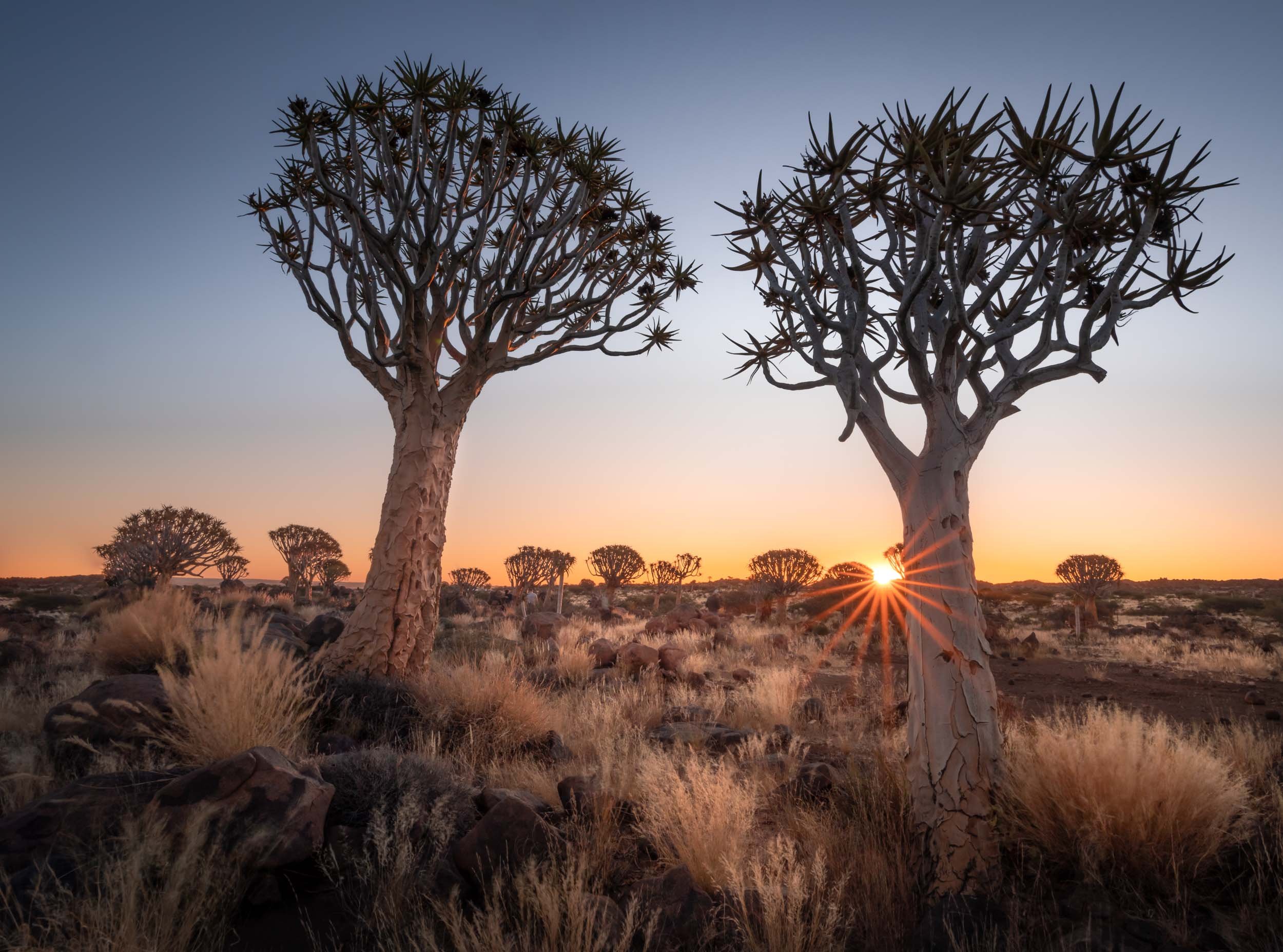
The Quiver Tree Forest
About 250 of these trees have grown here, and it's one of the only forests of this type that occurred naturally.
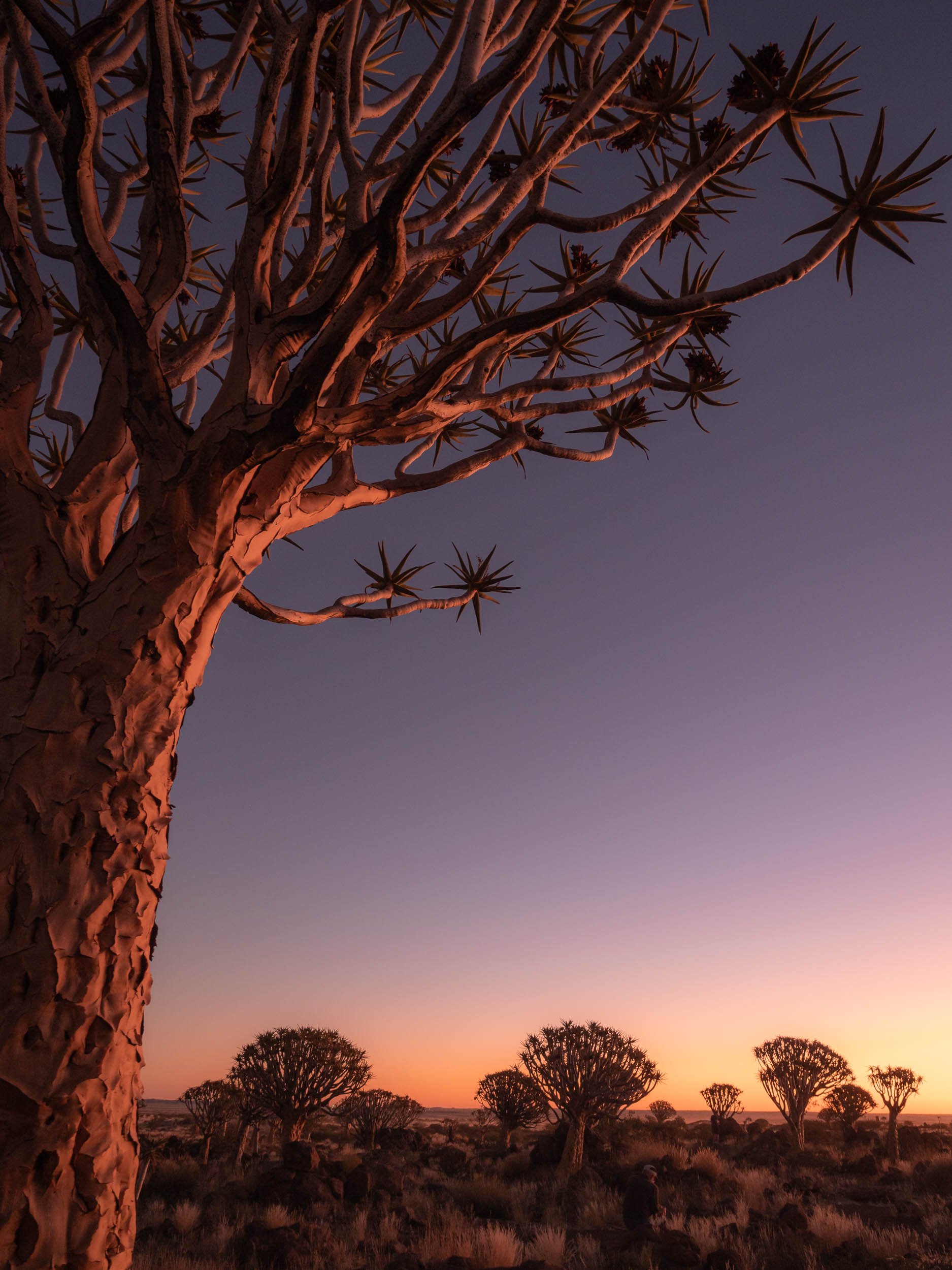
Kokerboom
This is the original Afrikaans name for them. They are named this way because in the past their wood was used to make quivers.
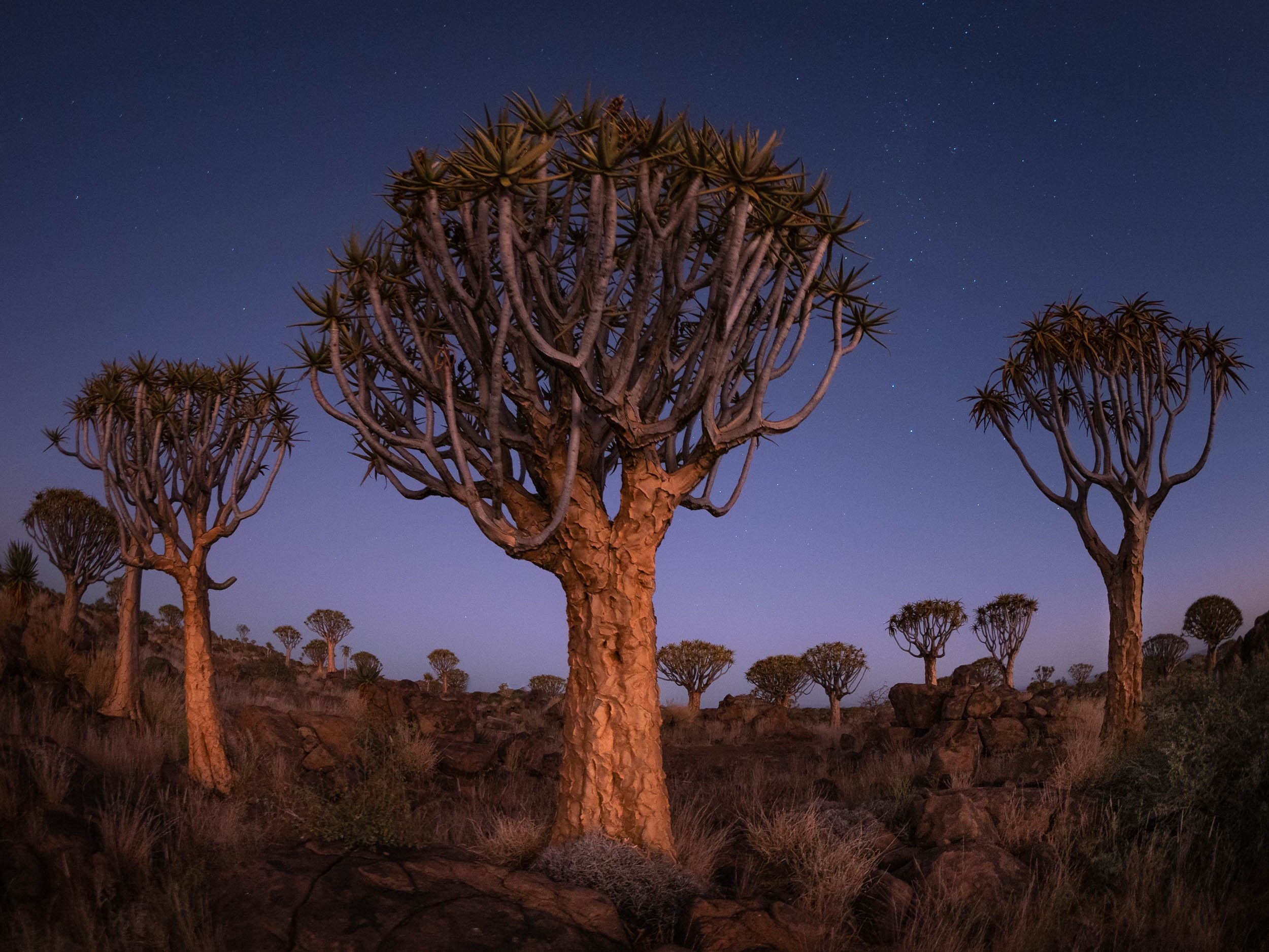
Fisheye Perspective
The biggest of the lot are about 200-300 years old, and roughly 10m tall.

The Milky Way Pano
This is why we came - the dark night skies with very little light pollution, and the arch of our home galaxy rising above the trees. I couldn't resist to get myself into the frame for this scene.
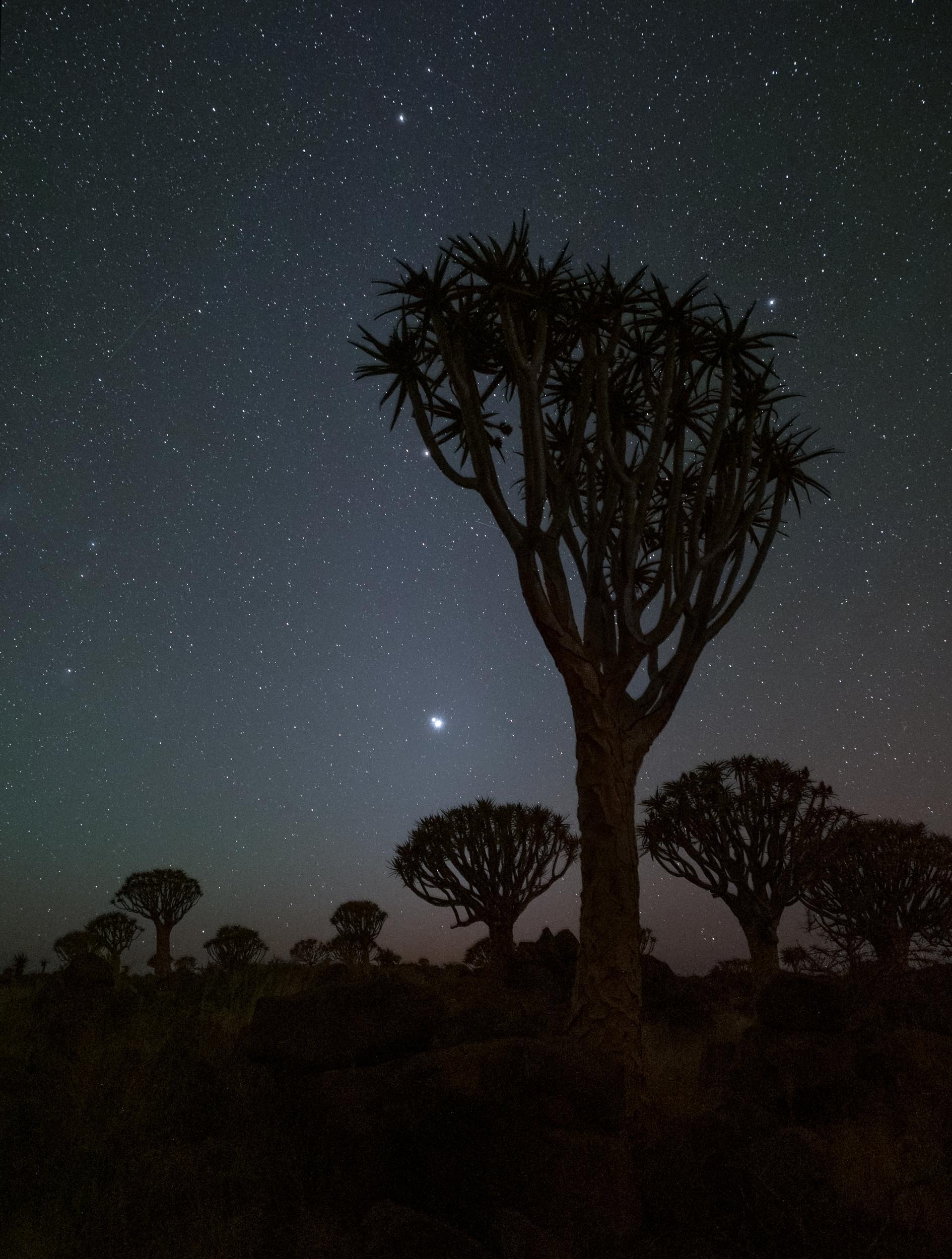
The Conjunction
Many people went to bed to get a few hours of sleep after our Milky Way photos. Yours truly didn’t, of course. I stayed up until sunrise to capture this very special sight: Venus and Jupiter rising just 0.6 degrees apart on the morning of May 1st.
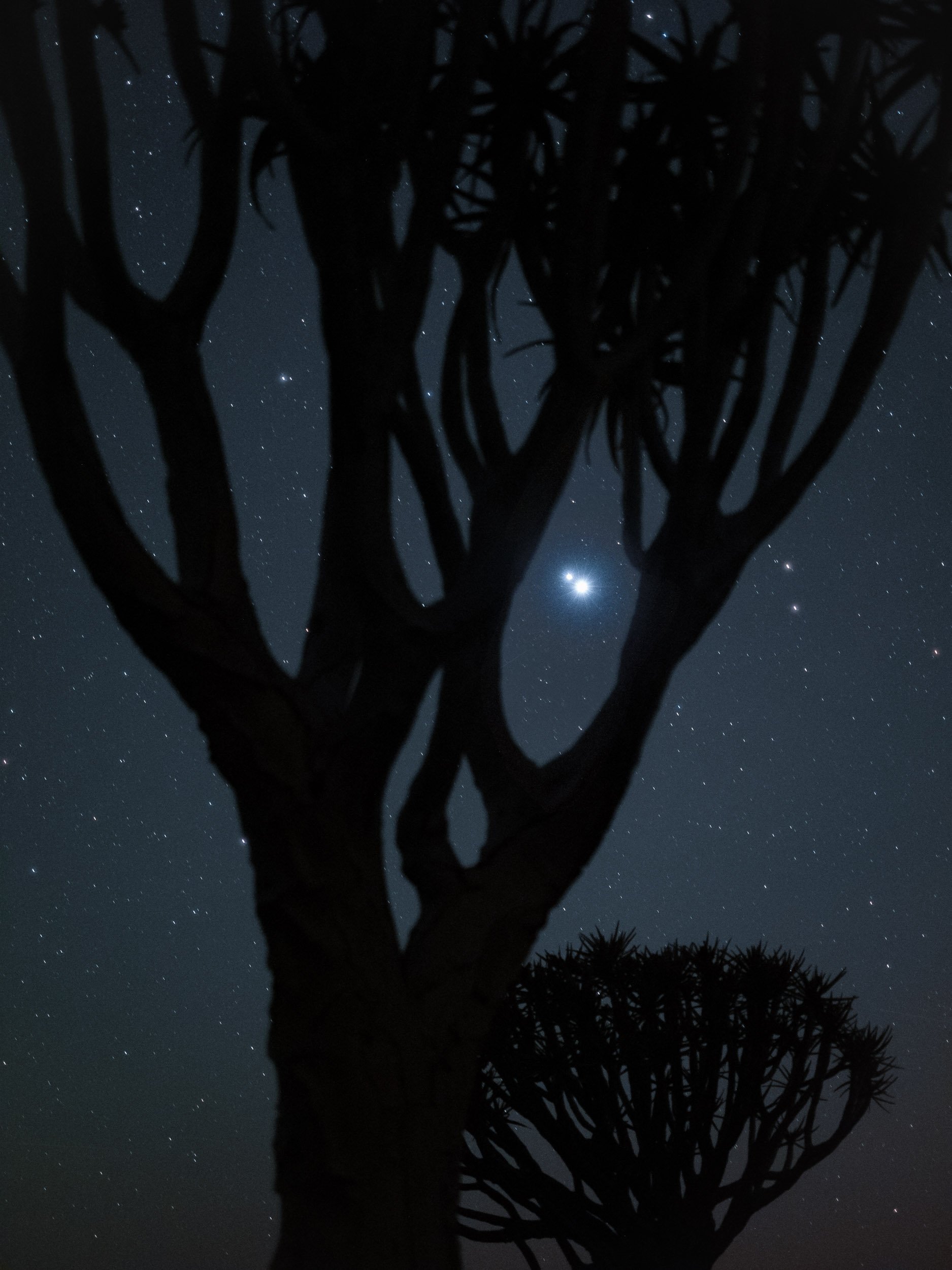
Rare Occurence
This kind of conjunctions happens every few years at best. In reality, the two planets are still almost 700 million kilometres apart of course - perspective is everything.

Sunrise
While I was at it, also managed to capture the sun come behind this pair of trees with a telephoto lens, for that amazing compression effect.
Onwards
After a sunset, night, and sunrise at the Quiver Trees, we moved straight on to the next spot., Fish River Canyon for a night, and then into Lüderitz, one of the country’s most famous towns.

Fish River Canyon
The next day brought us to FIsh River Canyon - Africa's largest. It's 160km long and up to 550m deep in some places. Spot the people for scale.

Gondwana
We stayed close to the Canyon at Gondwana Nature Park, featuring some amazing rock formations, which obviously meant it was time for another Milky Way panorama!

Lüderitz
Sunset over Lüderitz with the Felsenkirche Rock Church) on Diamond Hill, a church in vertical gothic style that opened in 1912 during the diamond rush and is now a national monument.
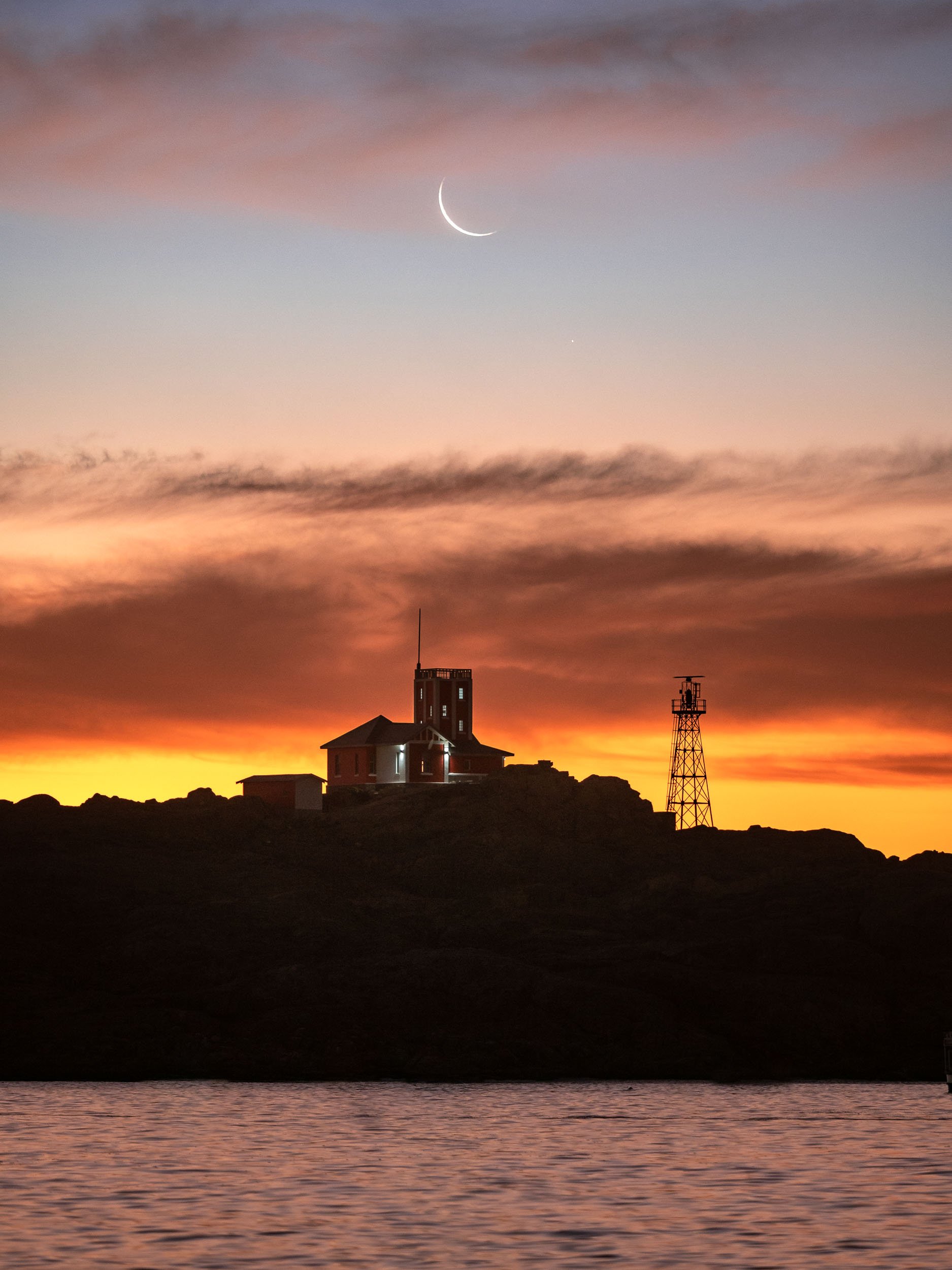
Moonset over the Lighthouse
The small town is twinned with a German city of the same name owing to its colonial heritage.
The Abandoned Town of Kolmanskoop
About 10km from Lüderitz you can find one of Namibia’s most popular destinations - a ghost village!
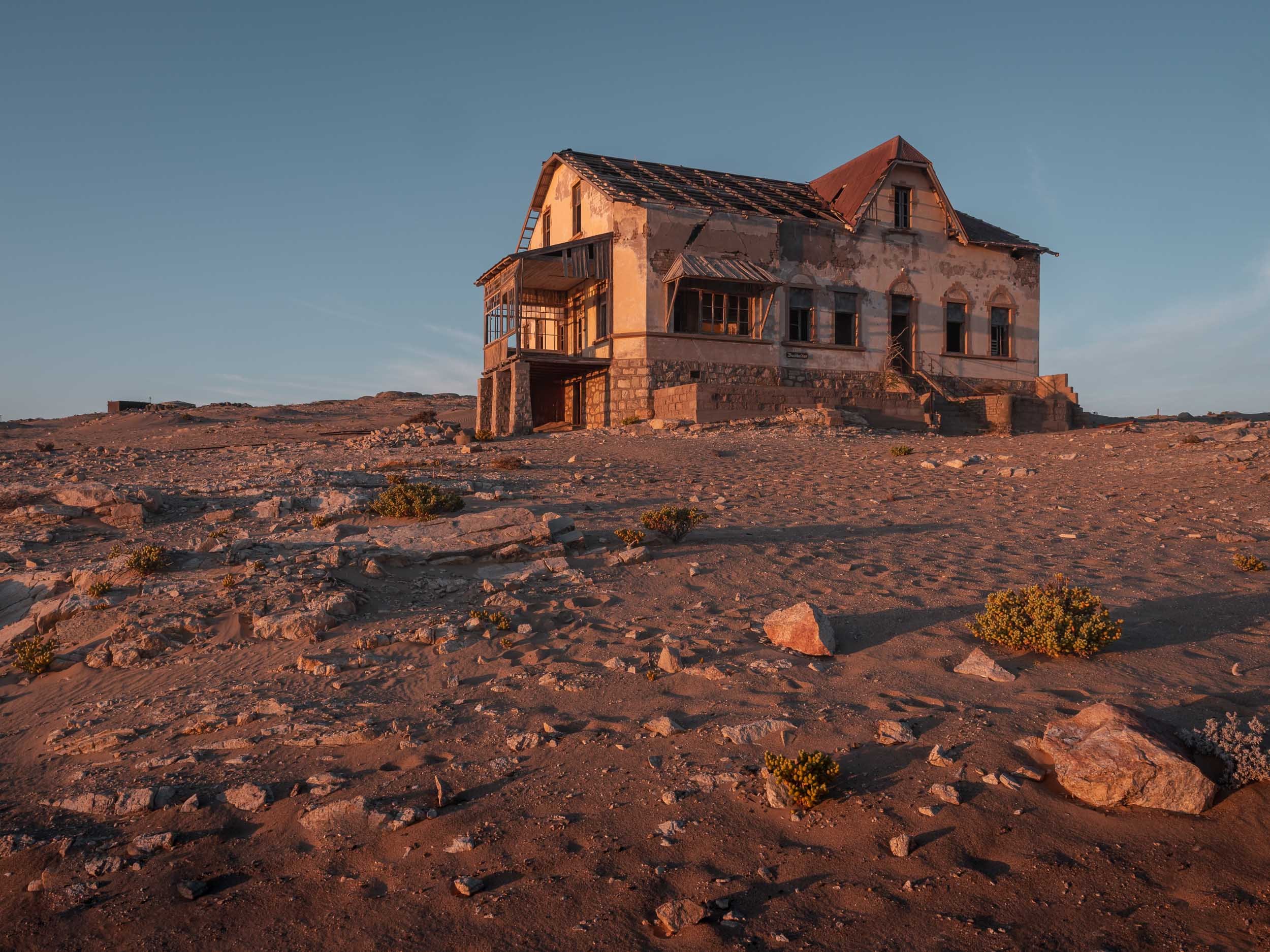
Rich Past
The town was quite well off - the first x-ray-station in the southern hemisphere, as well as the first tram in Africa were located here.
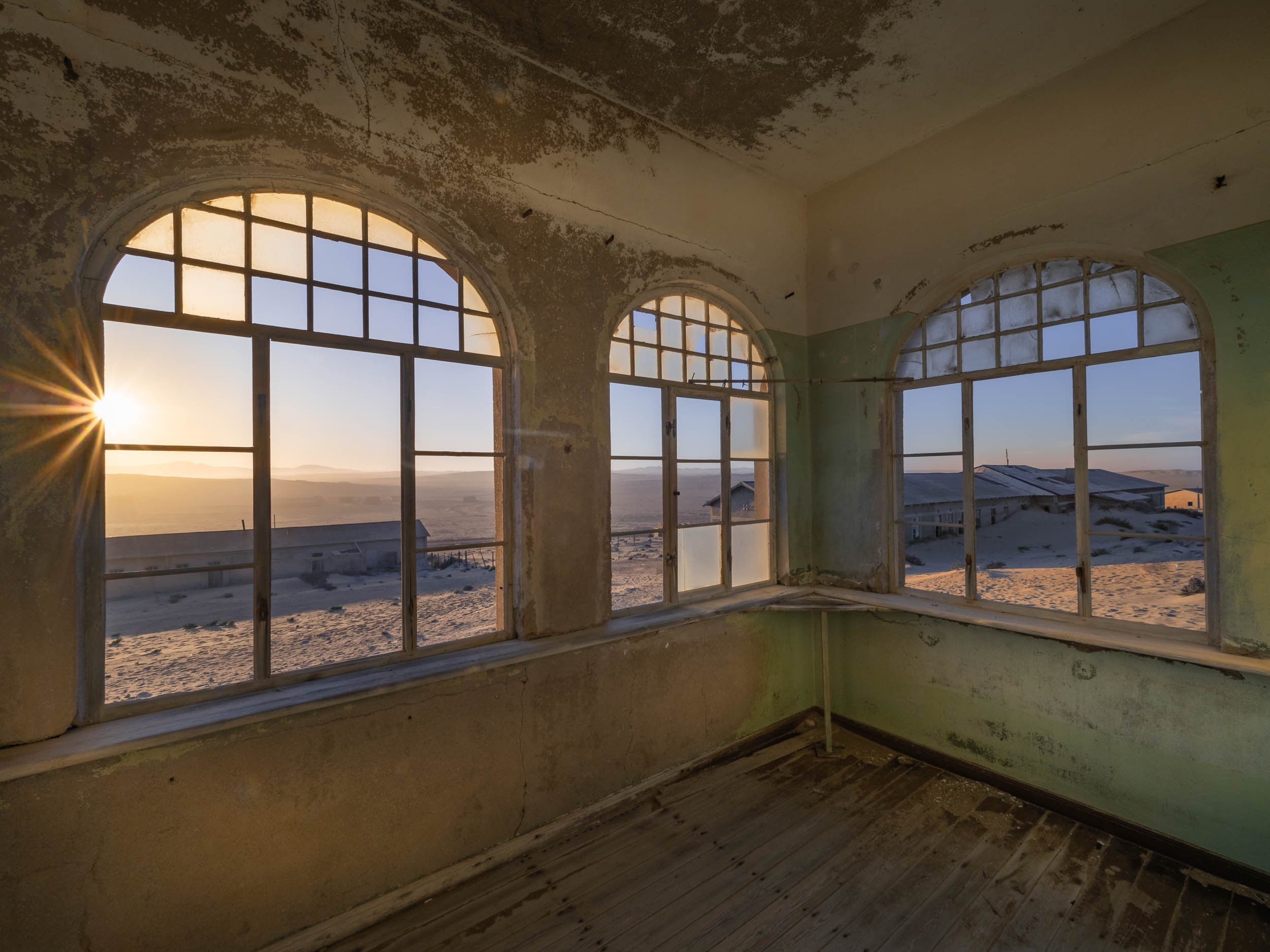
Windows
It was built during the diamond rush in the Namibian desert after 1908, but slowly declining from the 1920s and completely left behind in 1956.
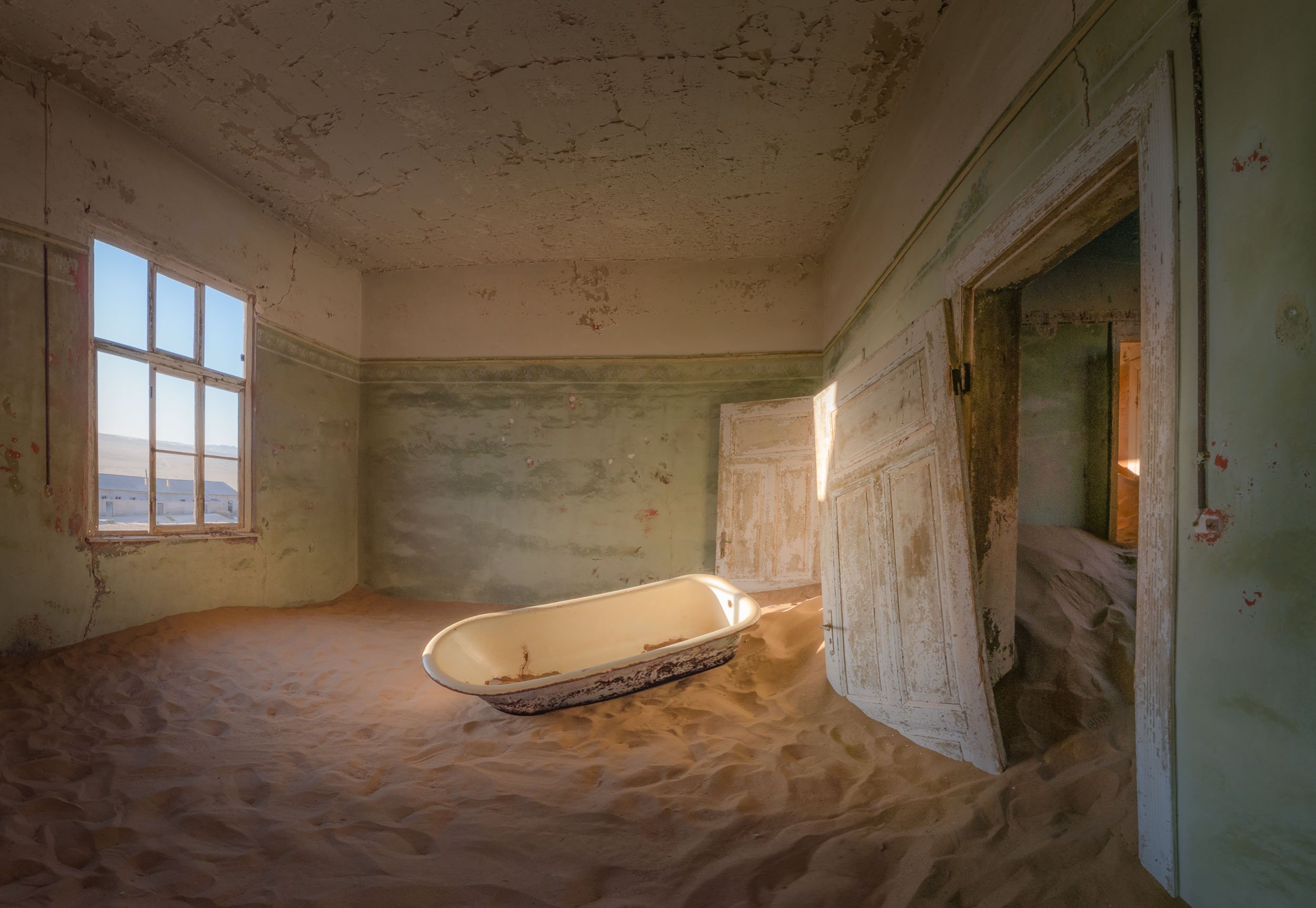
Remnants
You will find one or the other gem when exploring the houses.
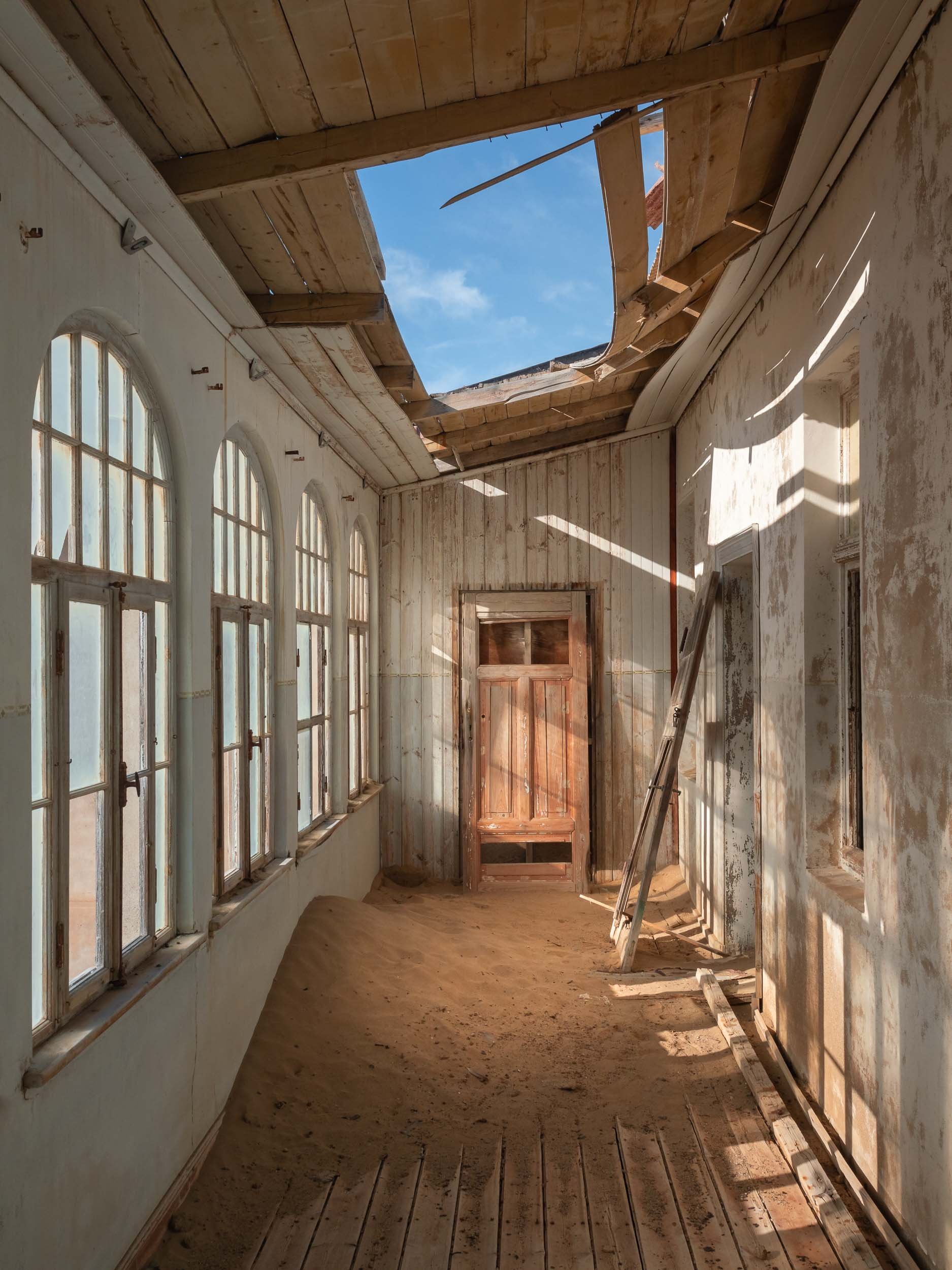
Architecture
Most of the village resembles the architectural style of a German town owing to Namibia's colonial past during the diamond rush.

Contrasts
Nowadays, the dunes have taken over and make for an amazing photography playground.
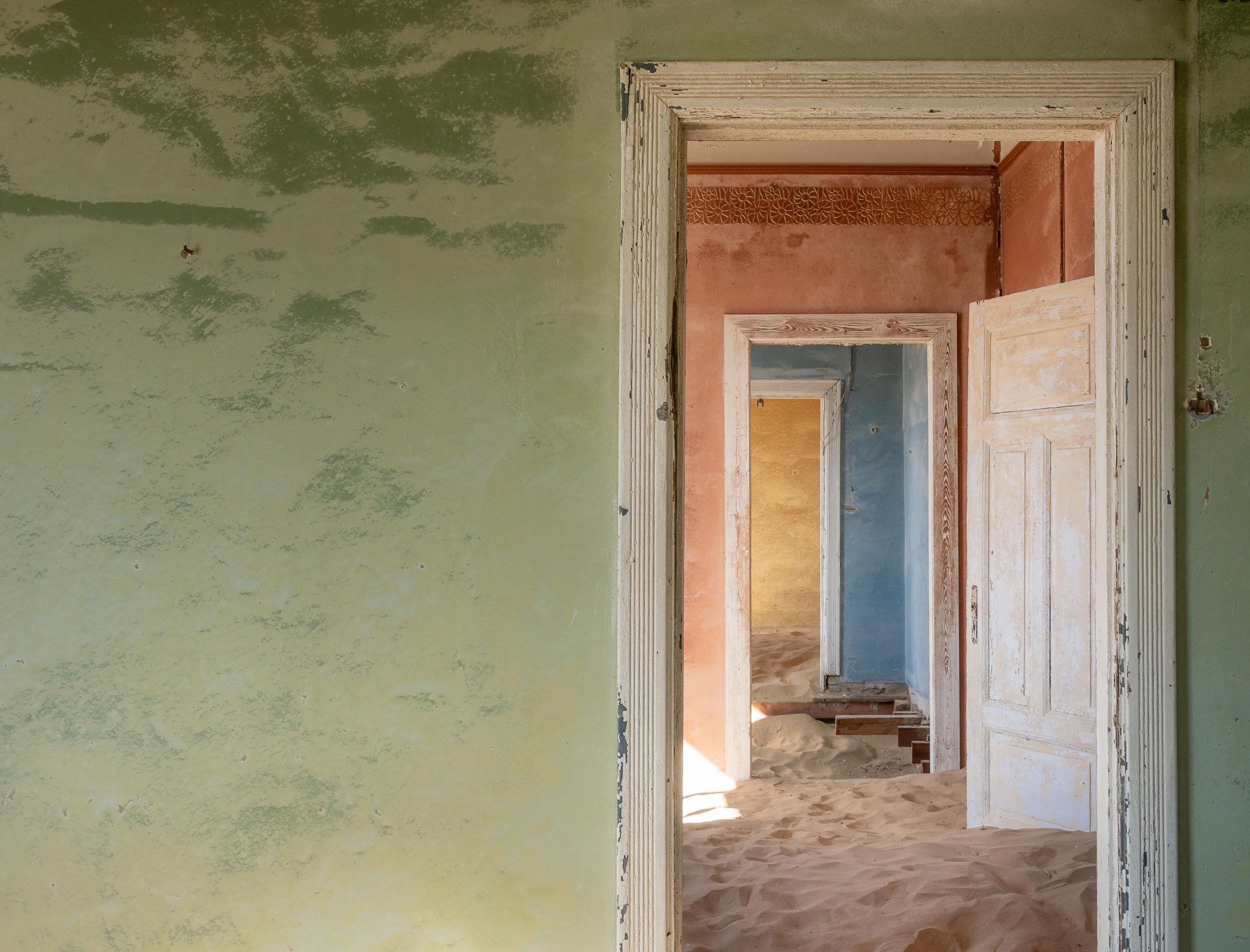
Colours...
...of the Namibian Flag - coincidence?
Onwards to Sossusvlei
After Lüderitz and the abandoned town, our next destination was the famous dunes of the Namib Naukluft National Park a bit further north of the country.

House under the Stars
We went to an abandoned small house near a railroad track to shoot a panorama of the Milky Way, but I had another photo in mind for this as well: A close up view of the house with the Great Magellanic Cloud, a galaxy which is only visible in the Southern Hemisphere and about 150,000 light years from earth. To achieve this perspective I had to reduce my exposure time to avoid the stars streaking, so I shot a lot of images that I planned to stack to avoid excessive noise in the final result. After reviewing the images, I had another idea, which was to turn them into a small star trail exposure of about 10 minute. Since we were pretty much facing exactly south, this created the typical vertigo style effect as the earth rotates, making it appear as though the stars were moving in a circle in the sky. You can see the Great Magellanic Cloud as the white patch on the right side of the image.
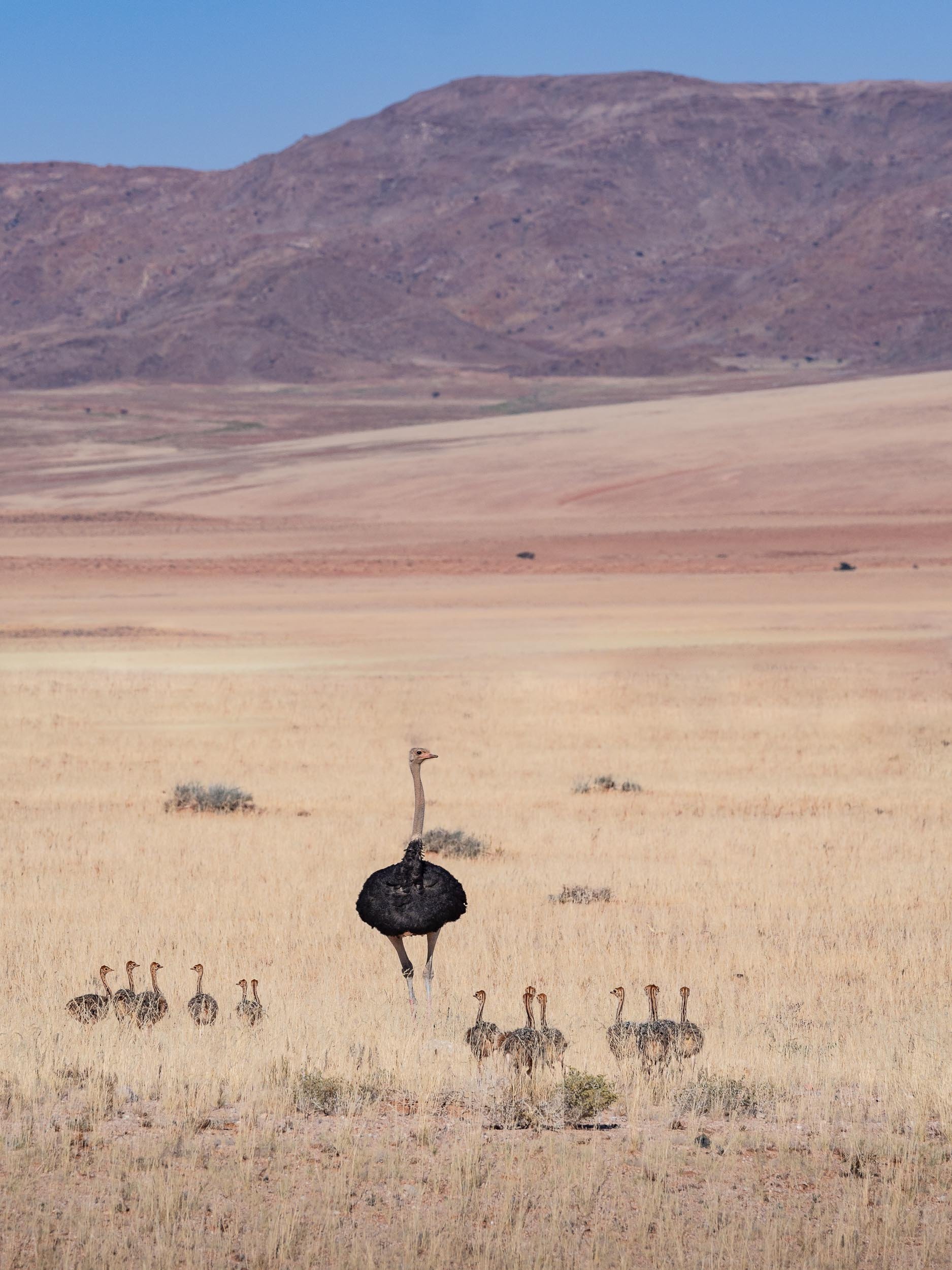
Ostrich Family
On our way to Sossusvlei, we passed through some of the Namibian dry landscapes, encountering this Ostrich and its chicks on the way.
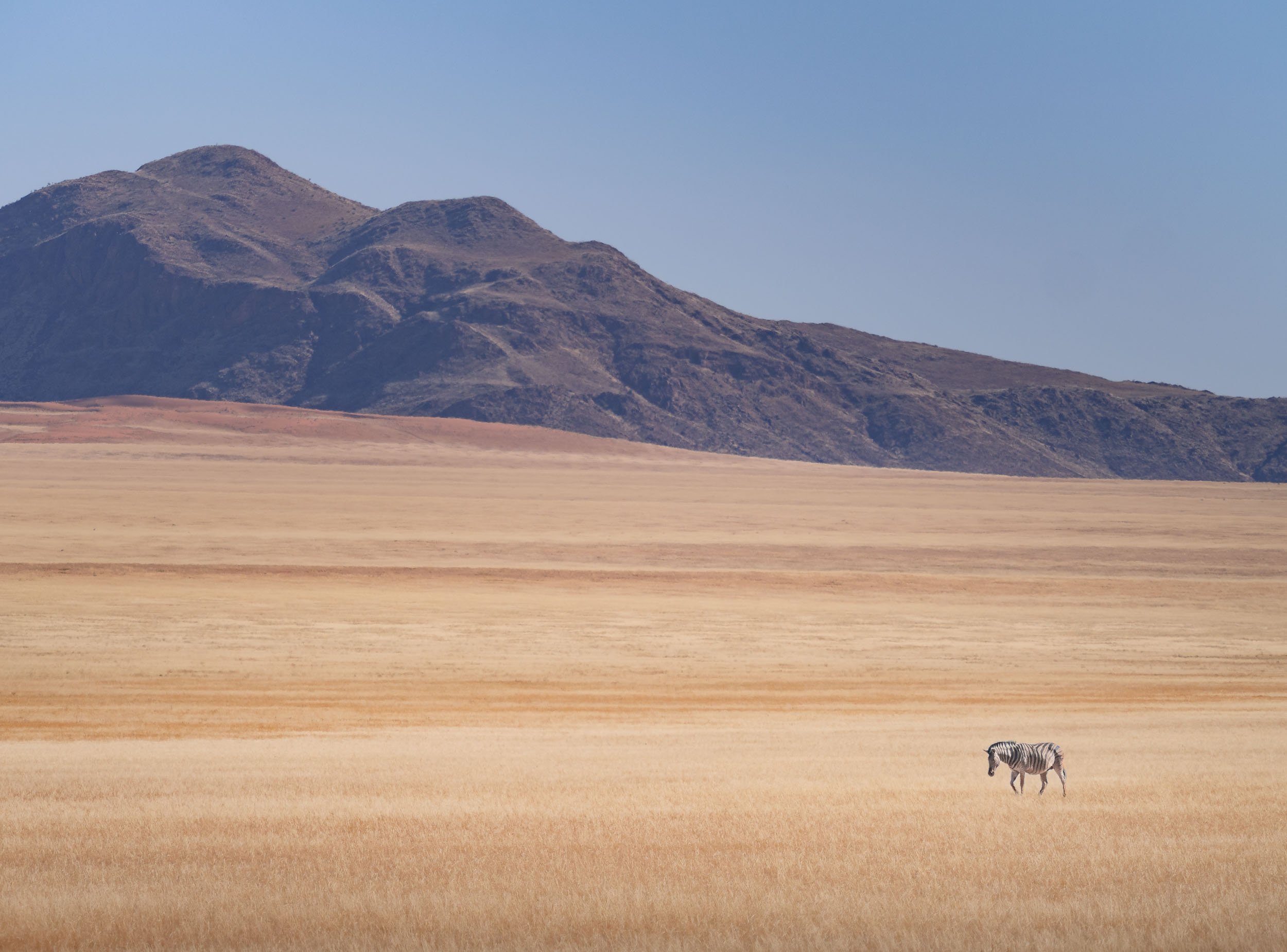
A Lonely Road
As well as this Zebra looking for greener pastures.
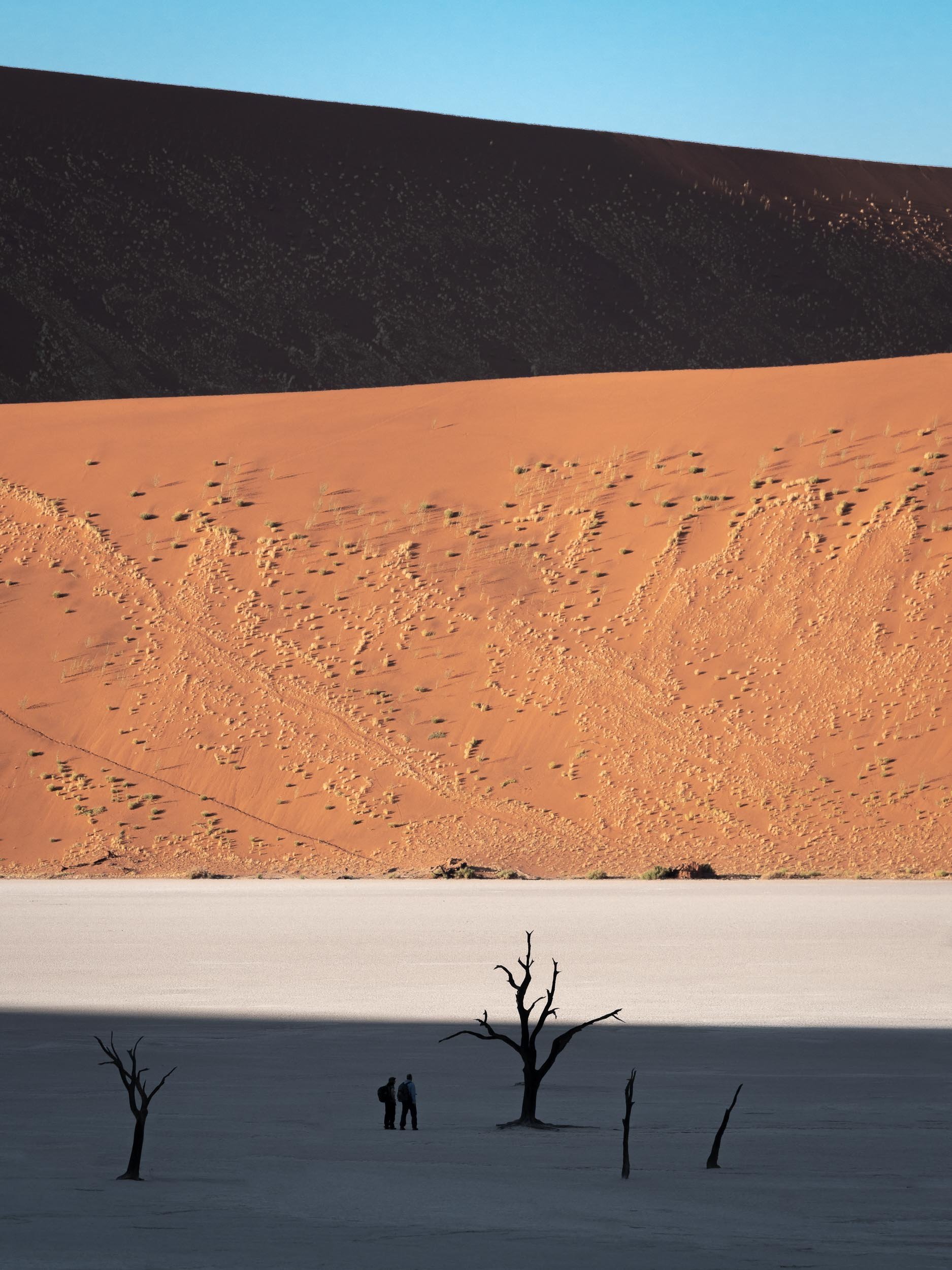
Deadvlei
The incredible Deadvlei clay pan in Sossusvlei, part of the Namib Naukluft National Park. This was definitely one of the places I was most looking forward to explore.

Dead Forest
Deadvlei used to be an oasis with several camelthorn trees until the Tsauchab river that watered it changed its course.

Surreal
These trees are said to have died 700 years ago.

Interplay
The morning light and shadows alongside the white, blue and orange colours create some very unique compostions, used in many films and photographs.
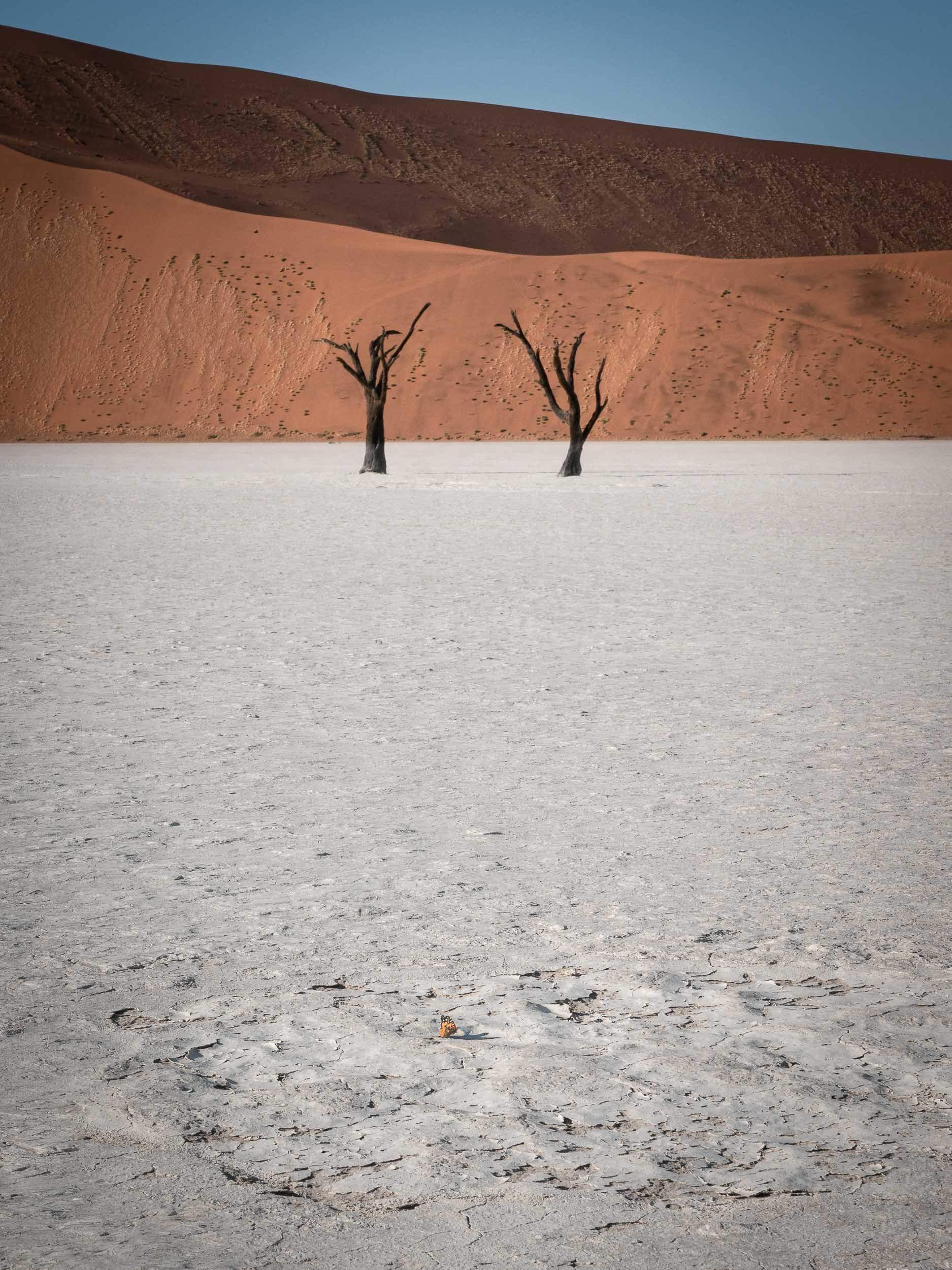
Life
There are still a number of plants and animals that survive in the area. Spot the butterfly.
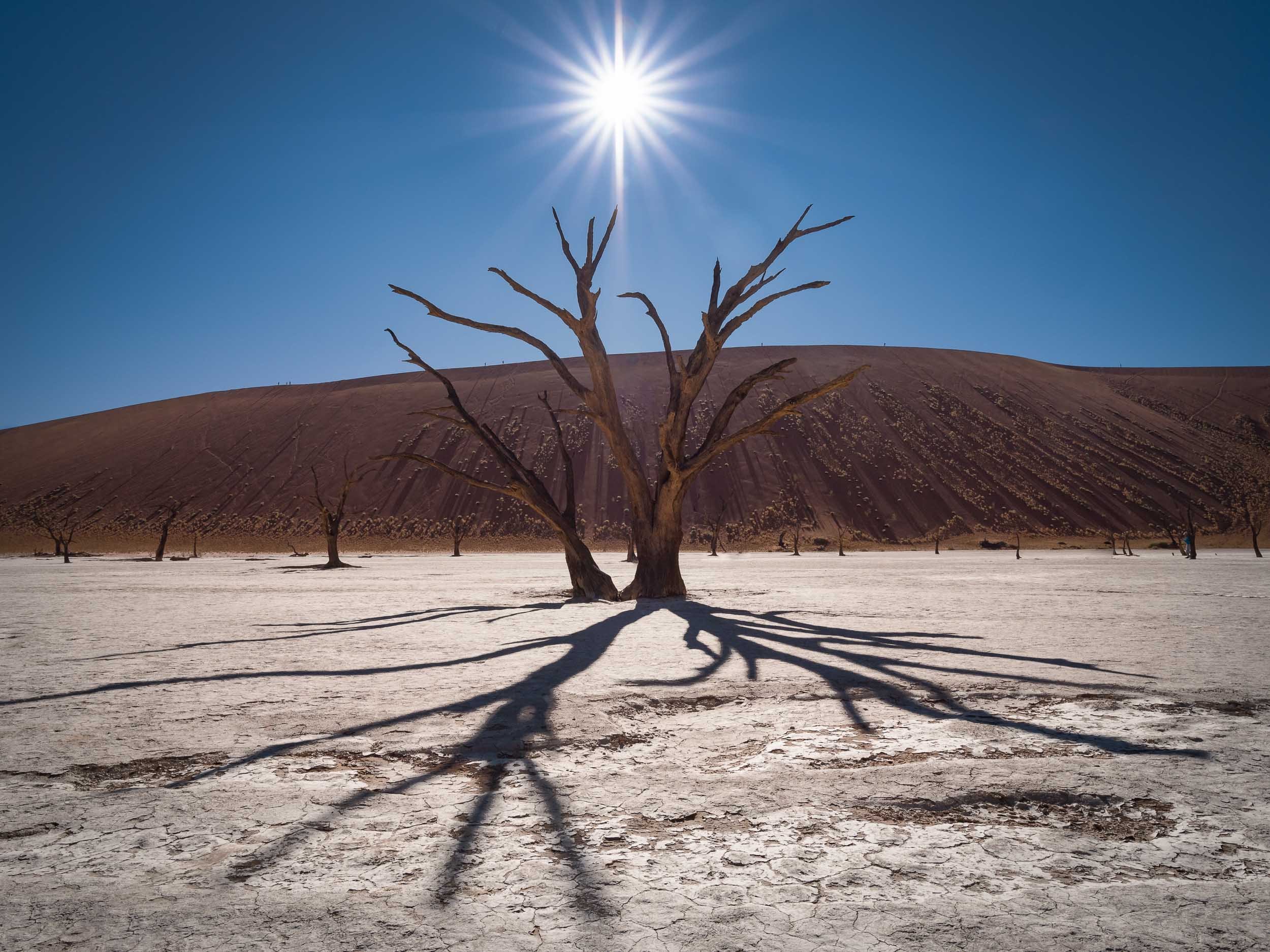
Sunrise
The best time to visit.
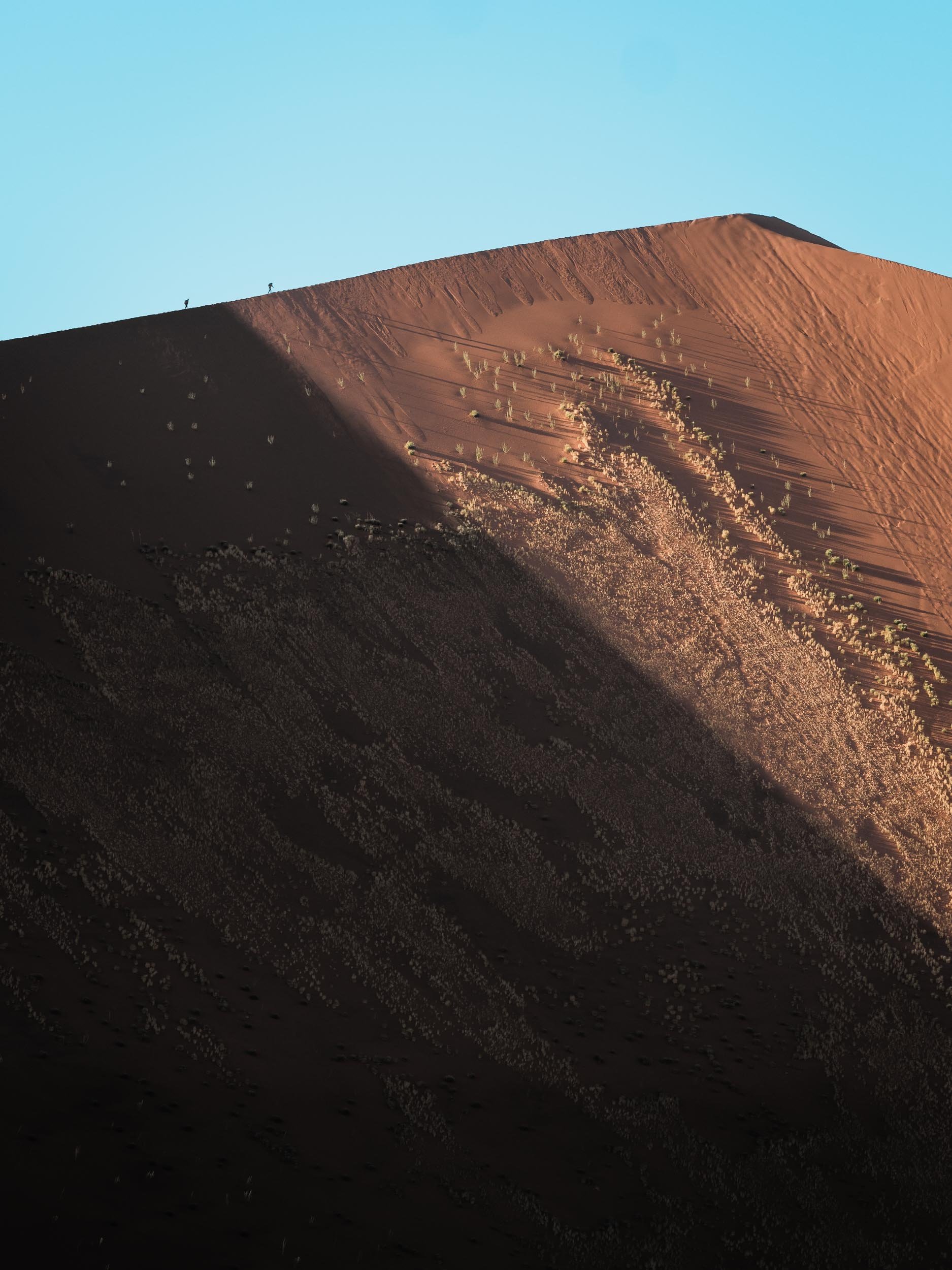
Climbing Big Daddy
The highest dune in the Sossusvlei area, at about 325 meters. Humans for scale.
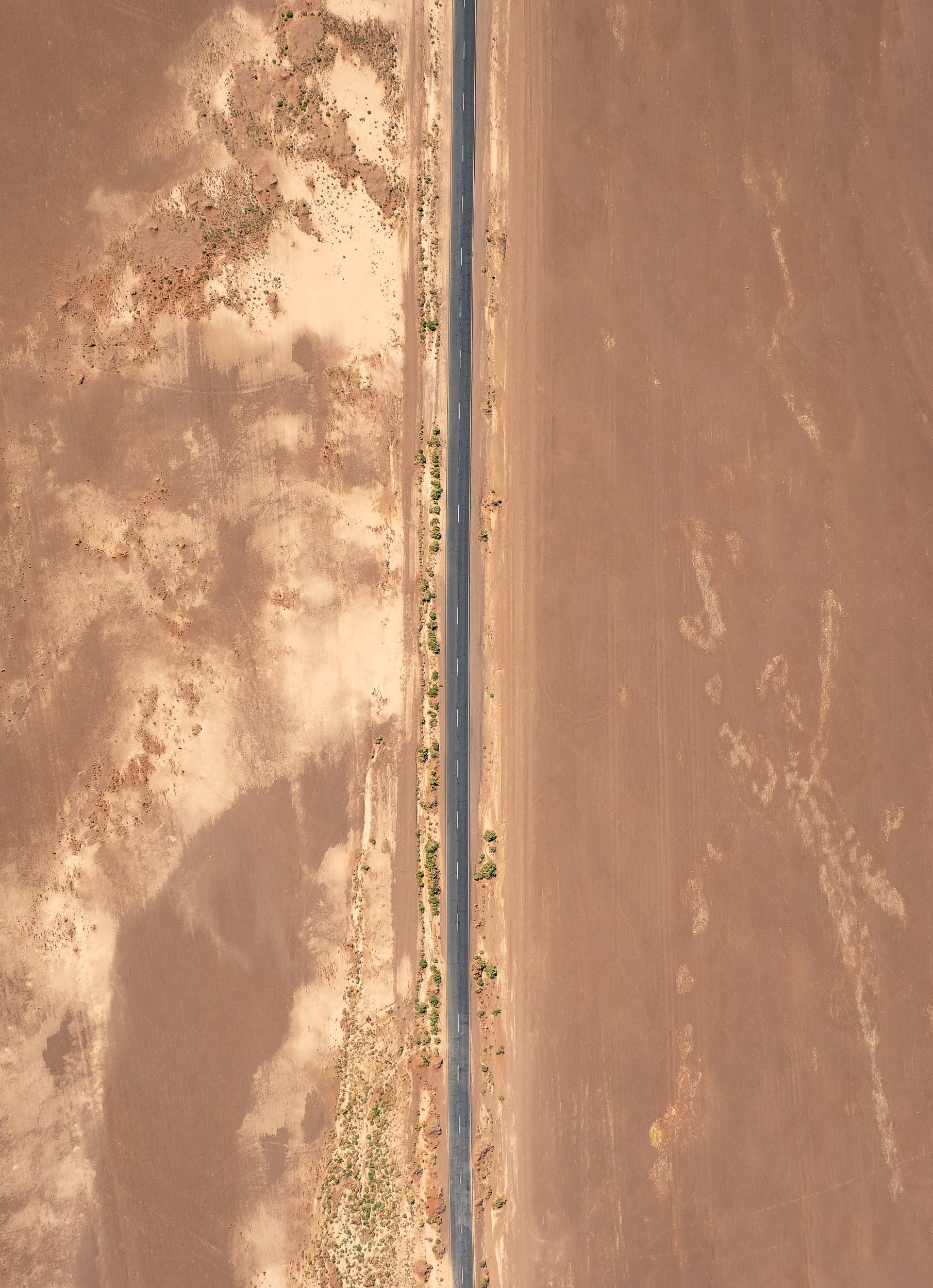
From Above
It's an incredible area for a helicopter flight. The road leading into the vleis is visible here - it later turns into a sandy dirt road accessible by 4x4 only.
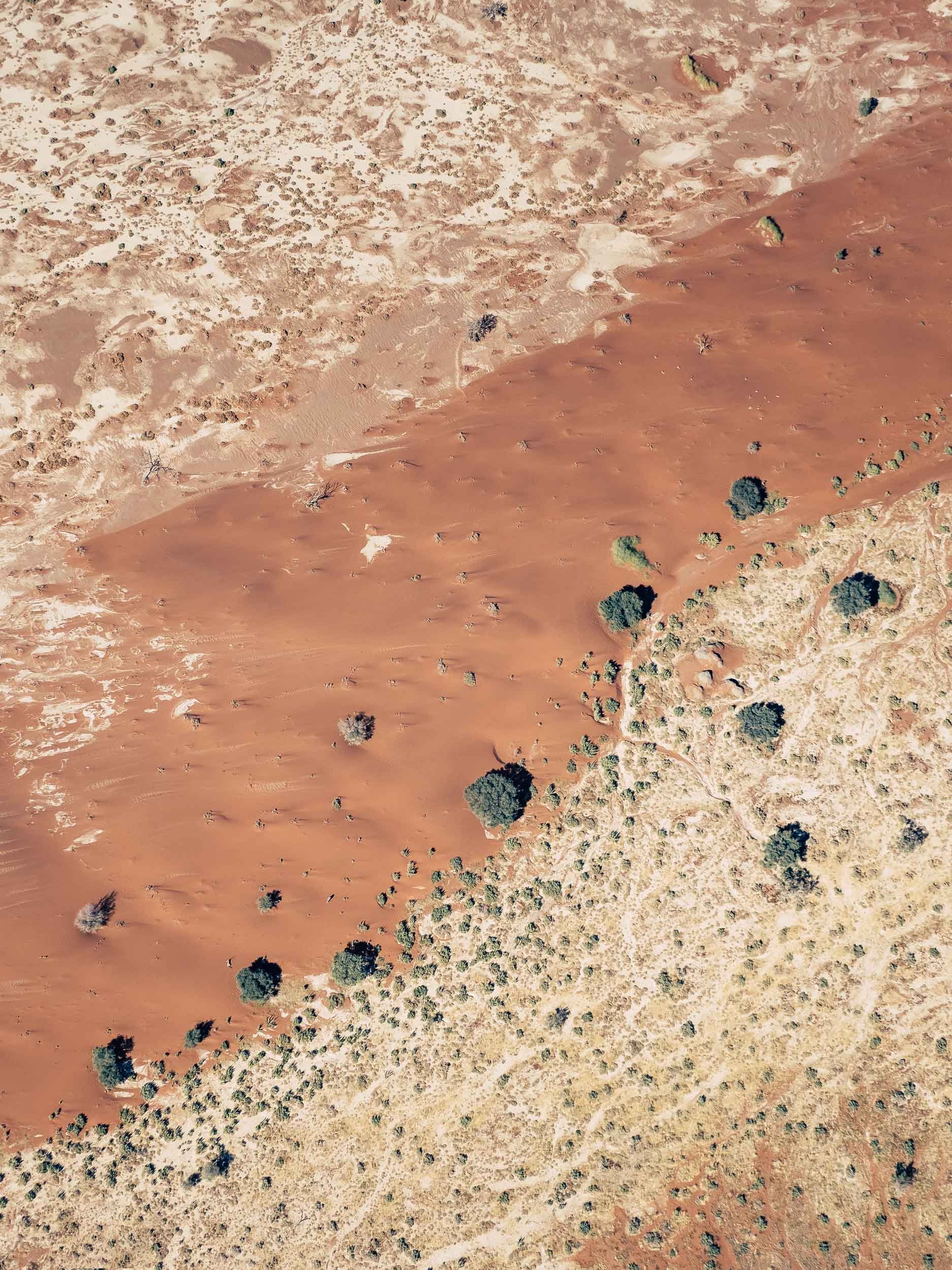
Varied
The diverse patterns of the desert.

Scale
The area is characterized by some of the highest dunes in the world.
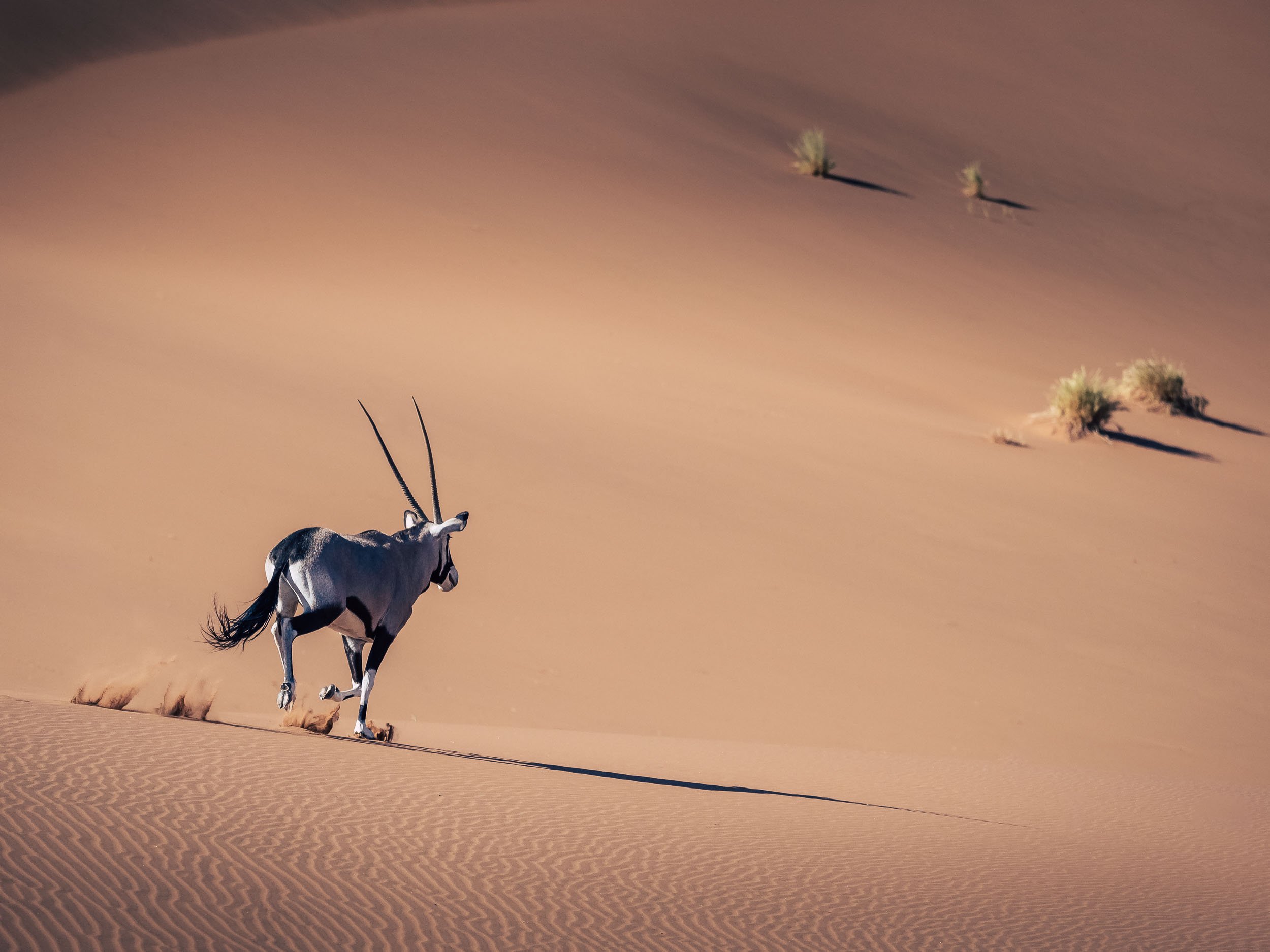
Chasing Oryx
These animals have found ways to survive in the harsh conditions.
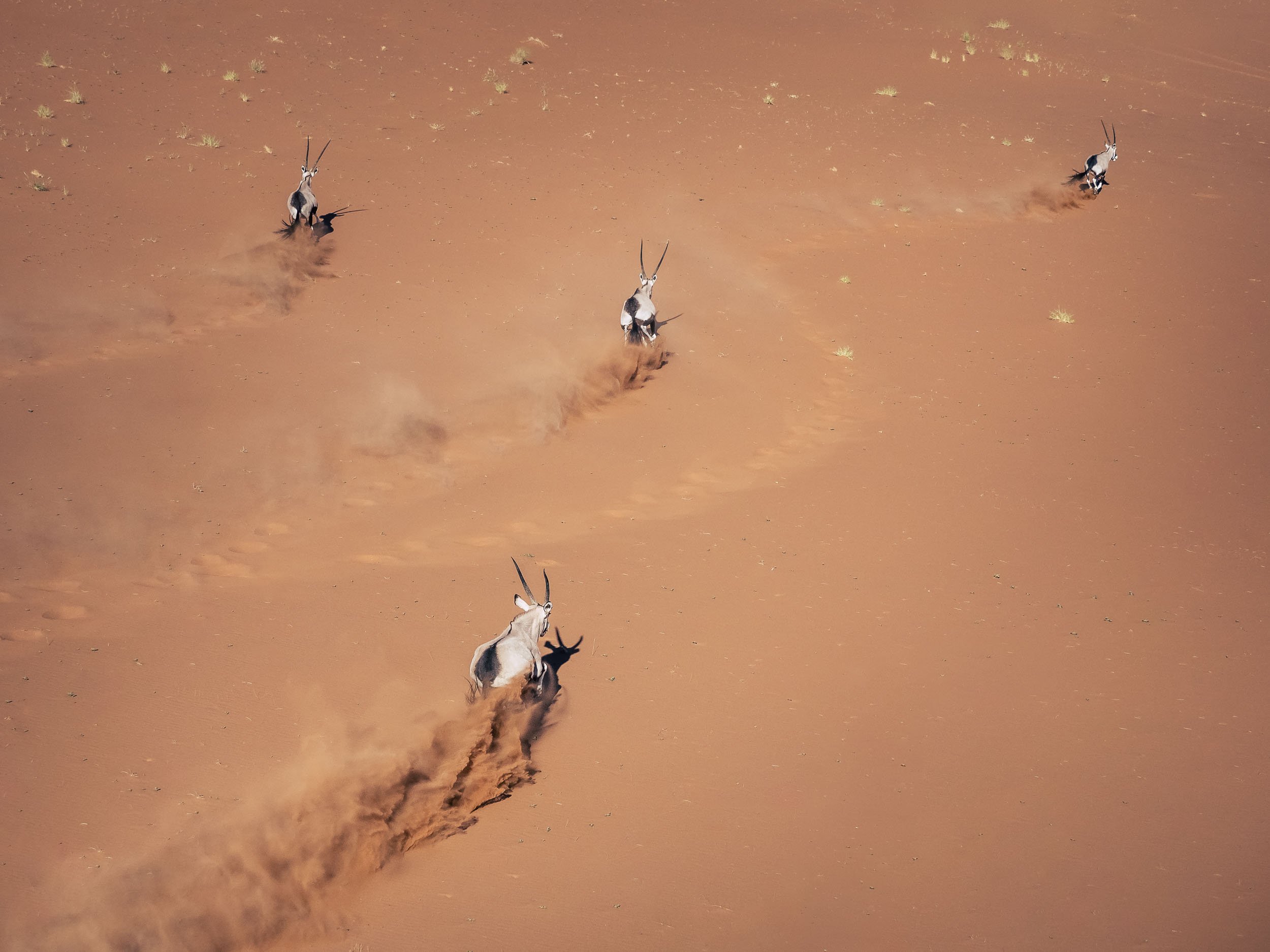
Over the Dunes
Observing them traverse the sand with ease is a special sight.
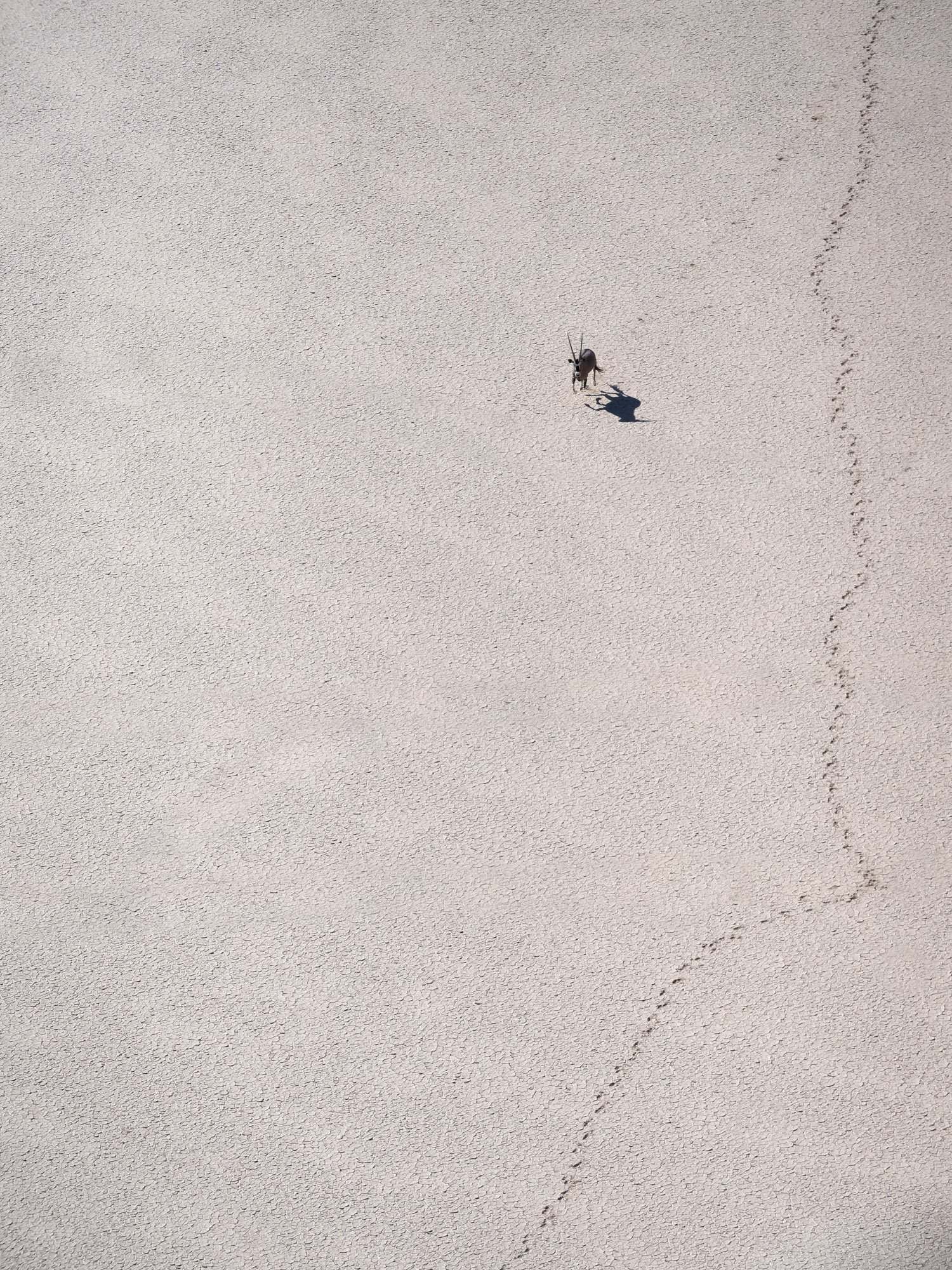
Through the Pan
This lonely Oryx crossed one of the salt pans as we flew over.

Dunes for Days
One of the many dunes one passes as you enter deeper into the Sossusvlei area.
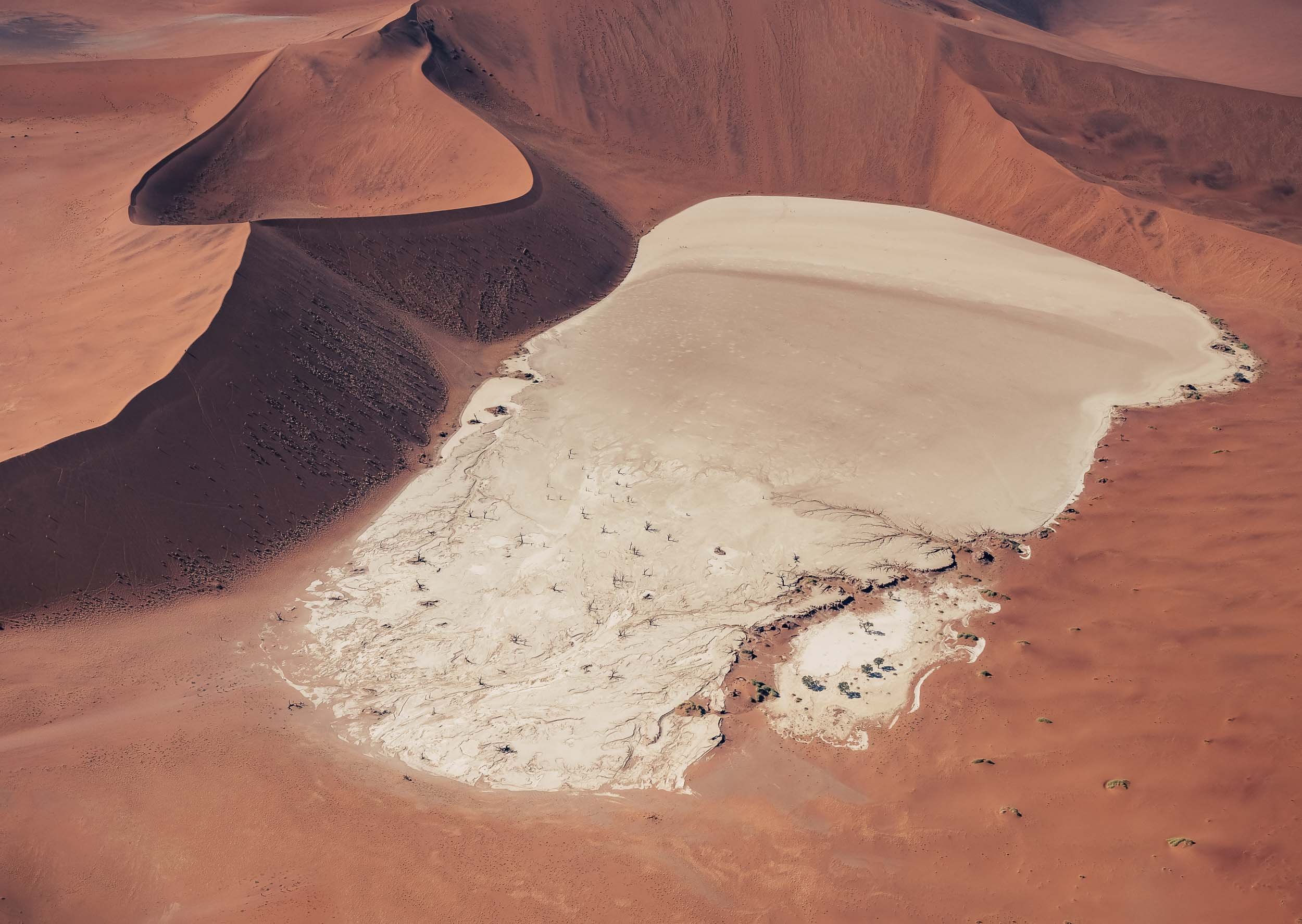
Deadvlei
The Deadvlei pan with its dried up Camel trees mainly visible on the lower end.
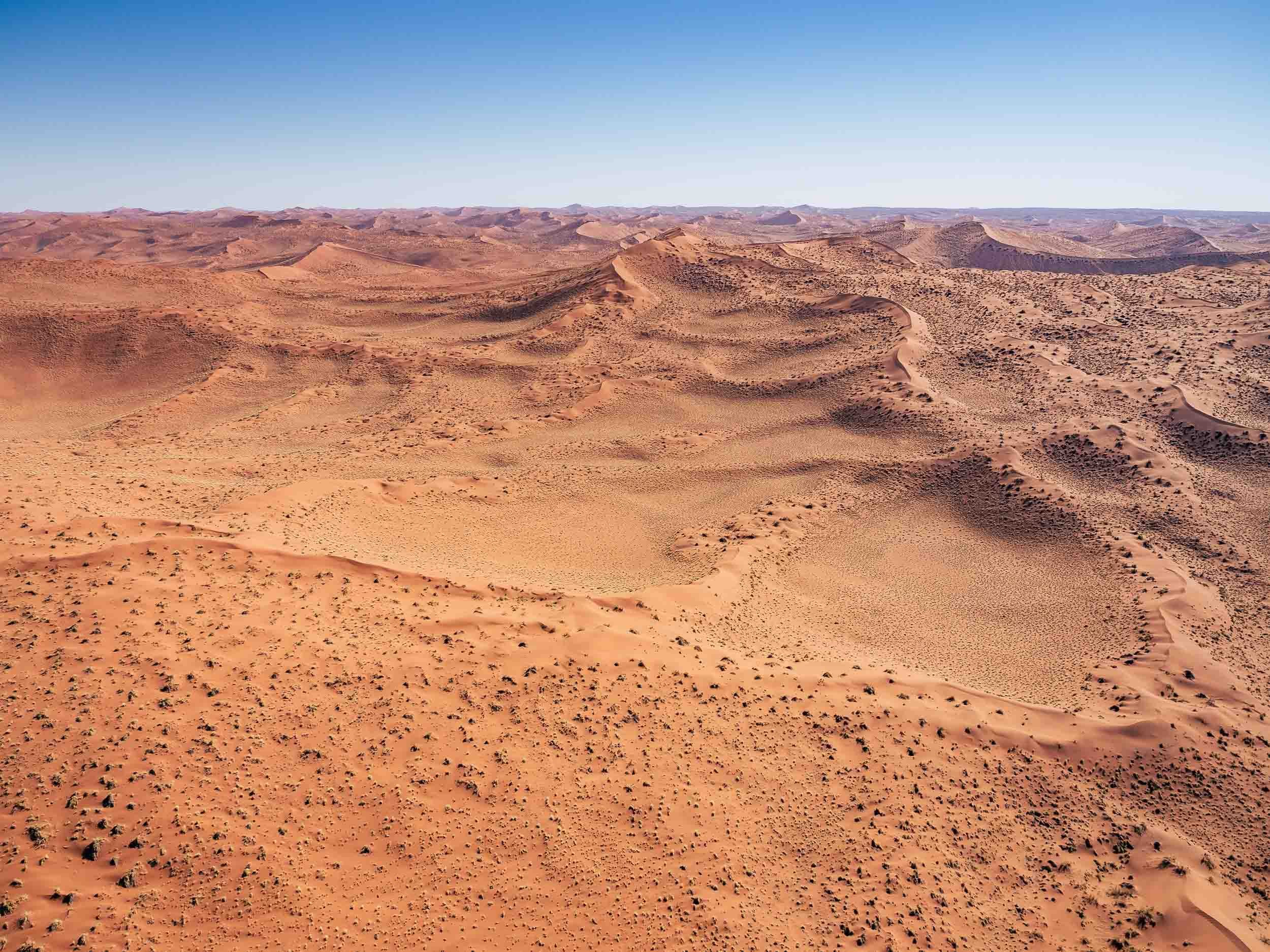
The World's Oldest Desert
With an overall area of almost 50,000 sqkm, the Namib-Naukluft National Park is the largest game park in Africa.
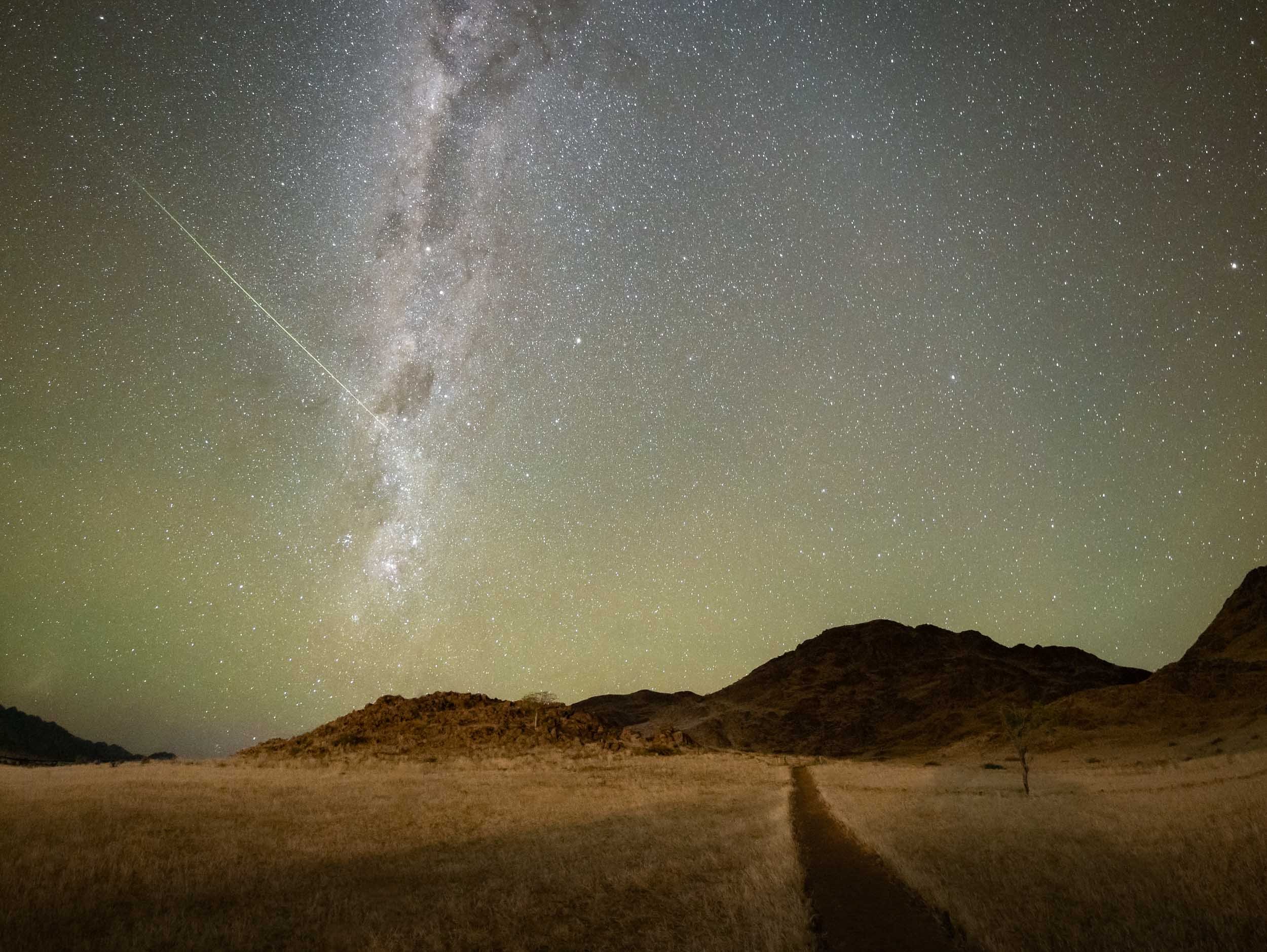
Visitors from Afar
The Eta Aquariids meteor shower was active during new moon when I was in Namibia. I’ve been shooting a lot of Timelapse in the dark skies and was able to capture this green fireball in the early morning hours of May 7th. The green hue on the horizon is from the strong air glow here, and the grass was illuminated by lamps from the lodge we were staying at on the outskirts of the desert area.
Swakopmund
To the northern end of the park lies this small city and its attractions.
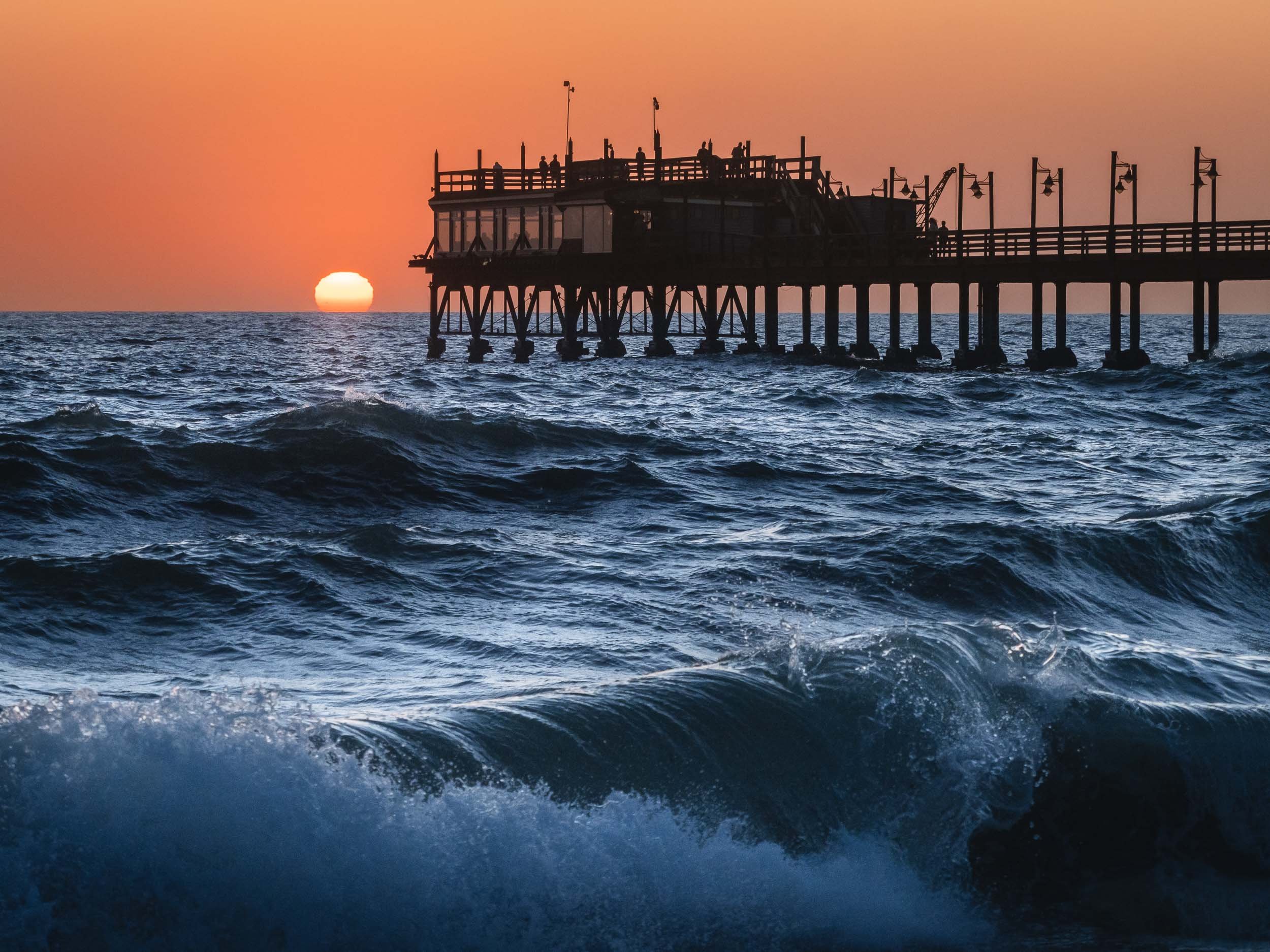
Swakopmund
The Swakopmund pier. The city is home to around 50,000 people and the 4th largest in the country, founded during the German colonial times.

Foggy Morning
A foggy morning in Swakopmund made for a beautiful atmosphere in the town, filled with examples of colonial architecture.
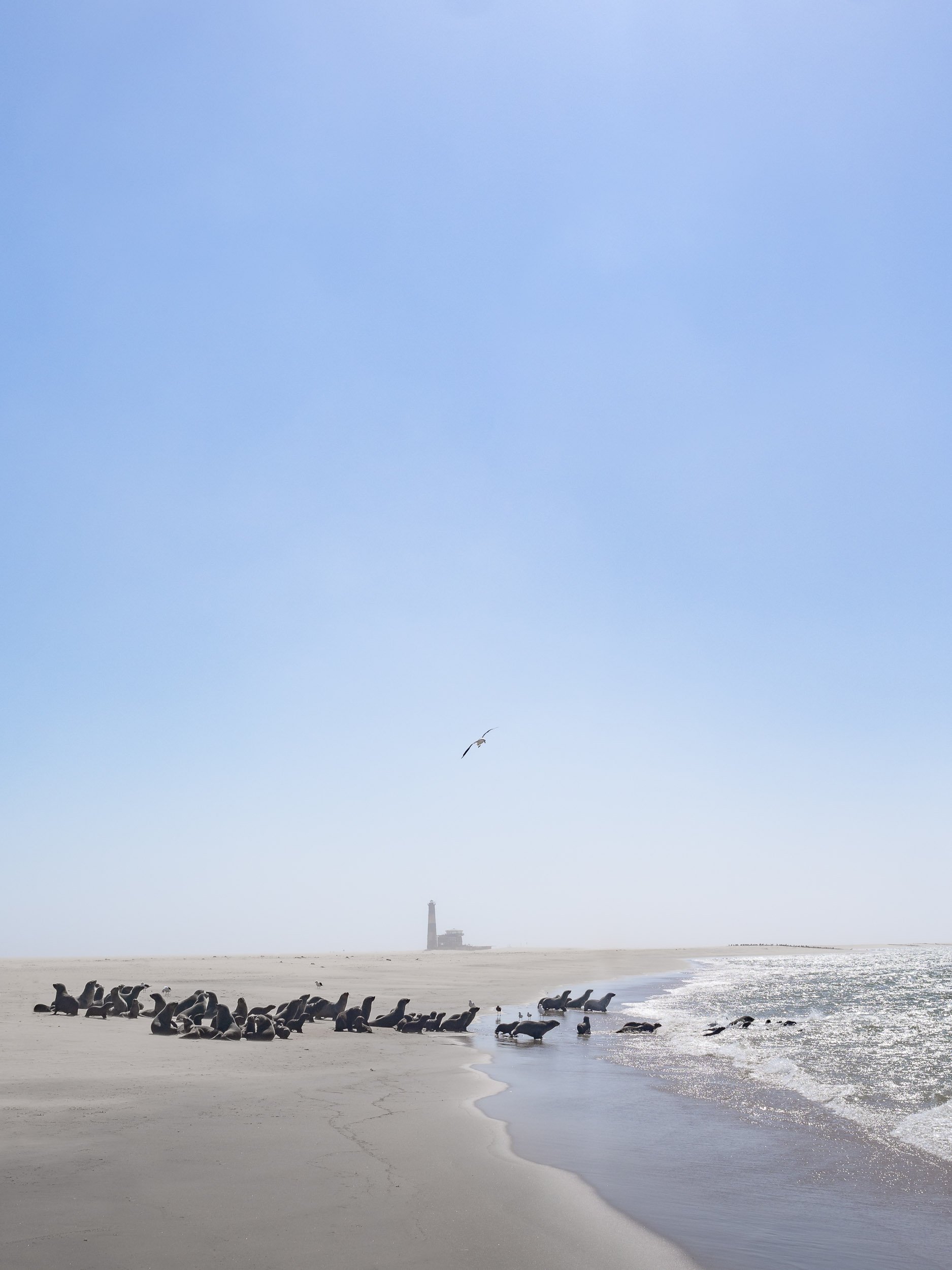
Pelican Point
A short boat ride from Walvis Bay lies this little peninsula, home to a large population of sea lions.
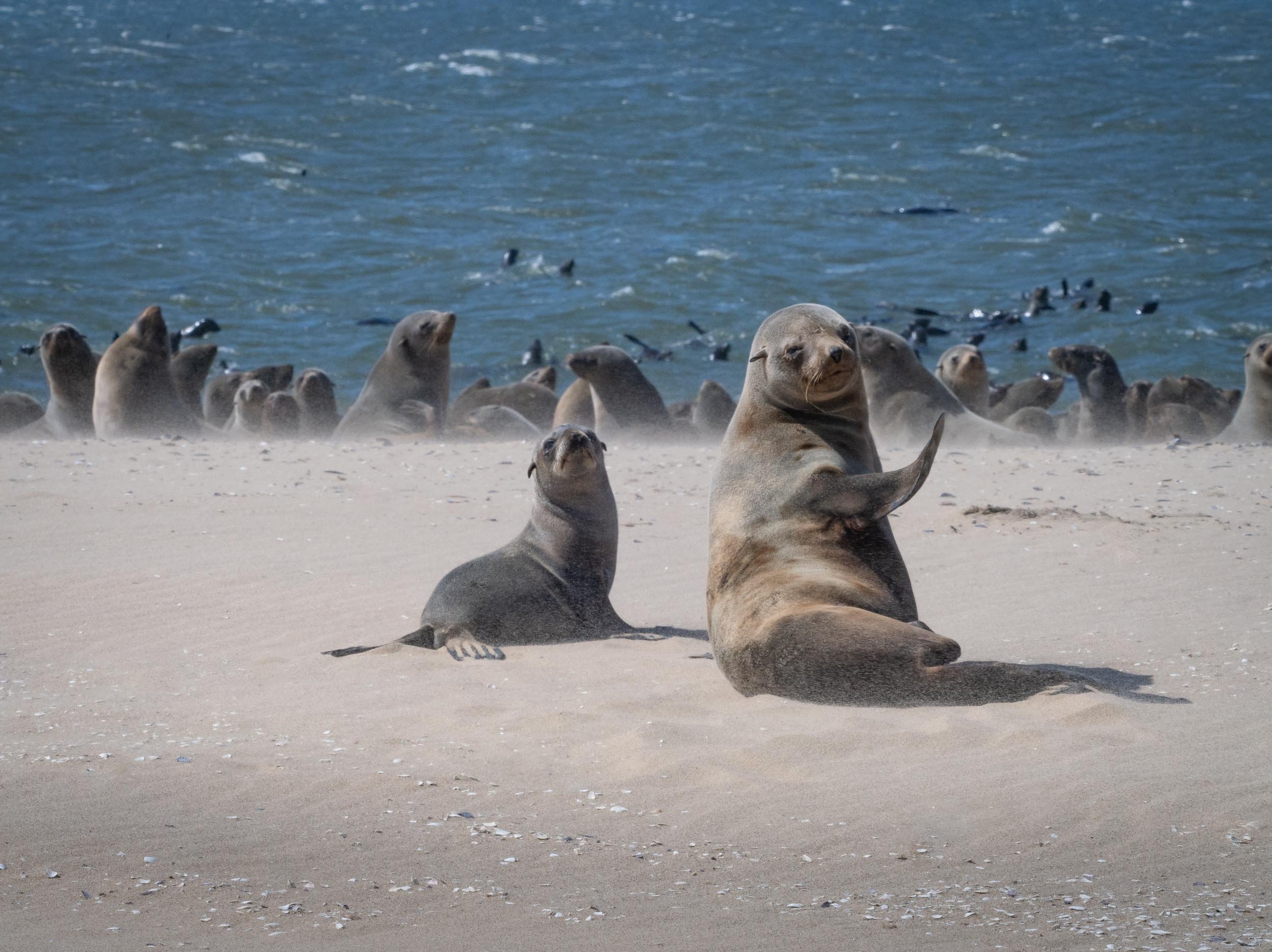
Hi
Clearly they're used to tourists taking photos.
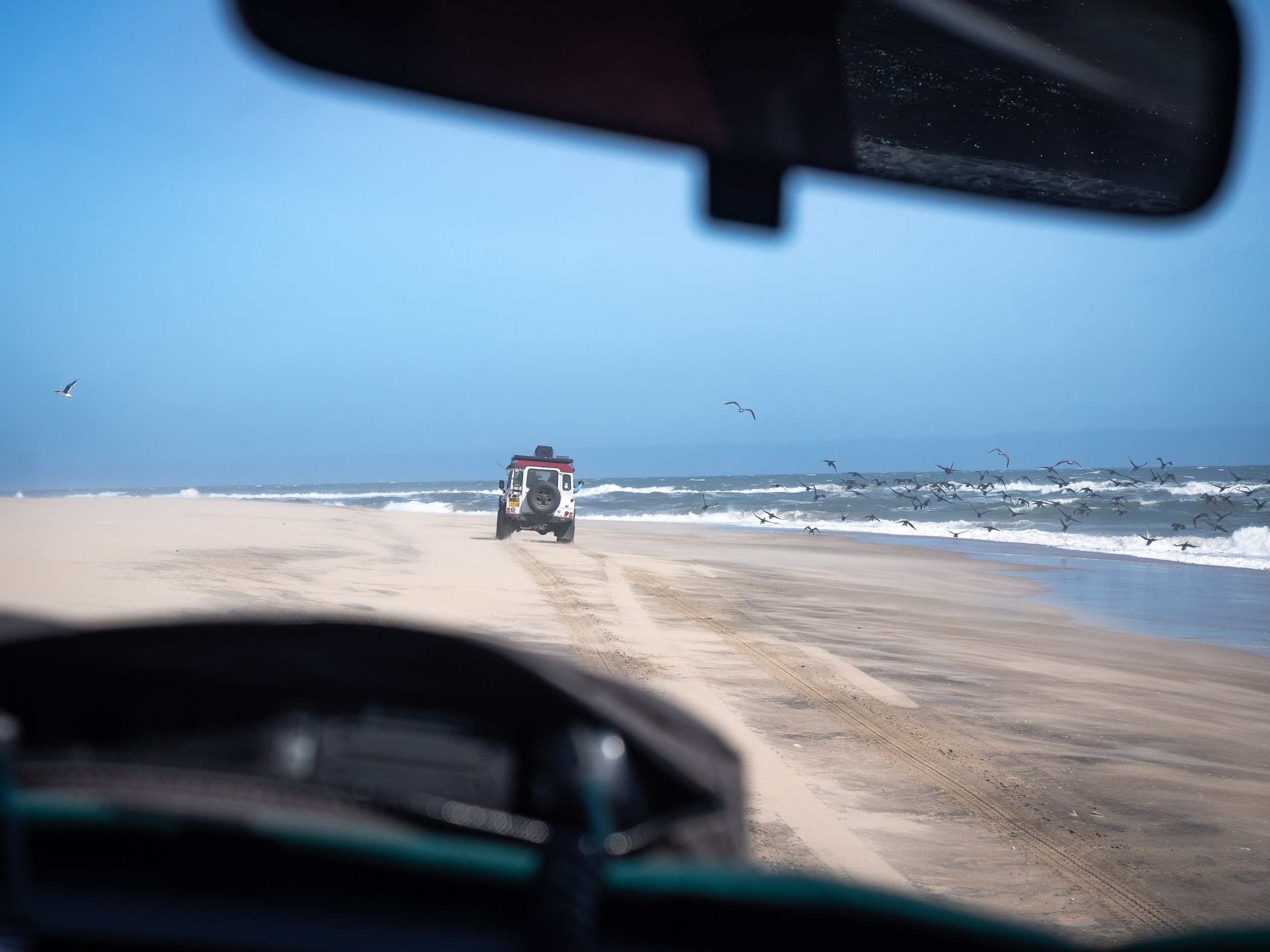
Beach Drive
A ride along the beach of Donkey Harbour towards the Sandwich Harbour area.
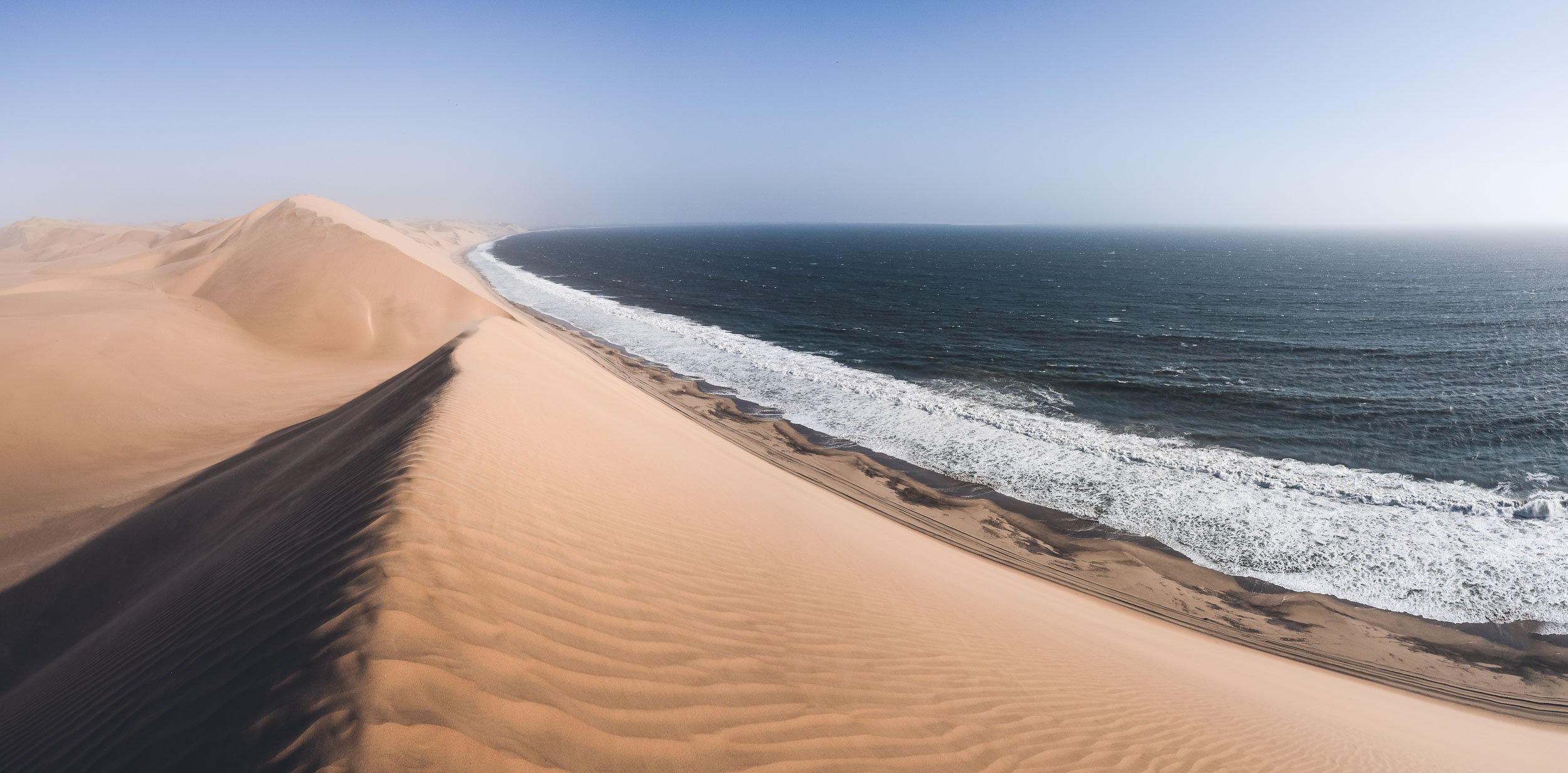
Where the Dunes Meet the Sea
A very unique place in the world, this area is where the Namib Naukluft Park meets the Atlantic Ocean.
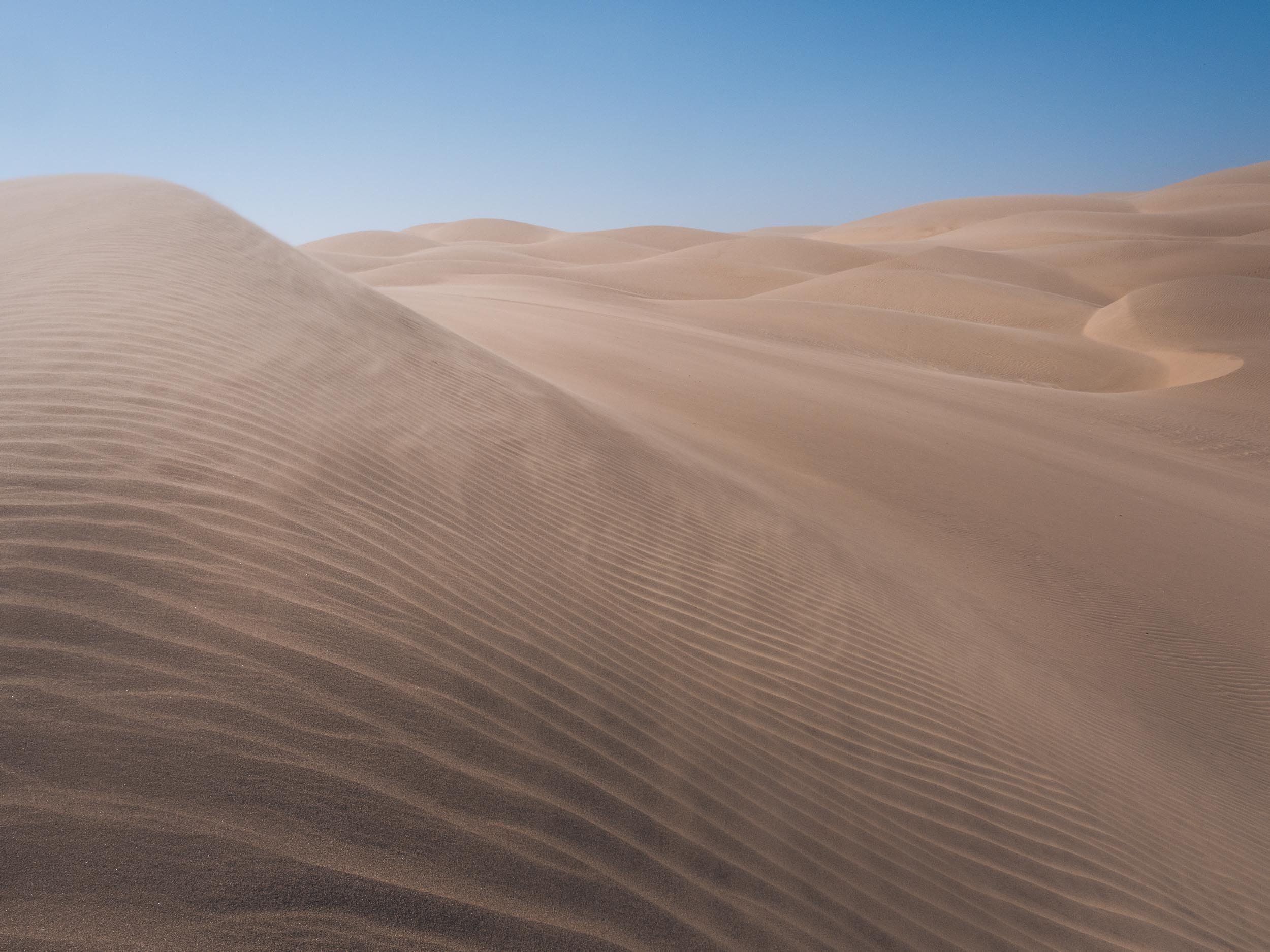
Windy
A windy day made for very difficult photography conditions, but beautiful textures and blowing sands.
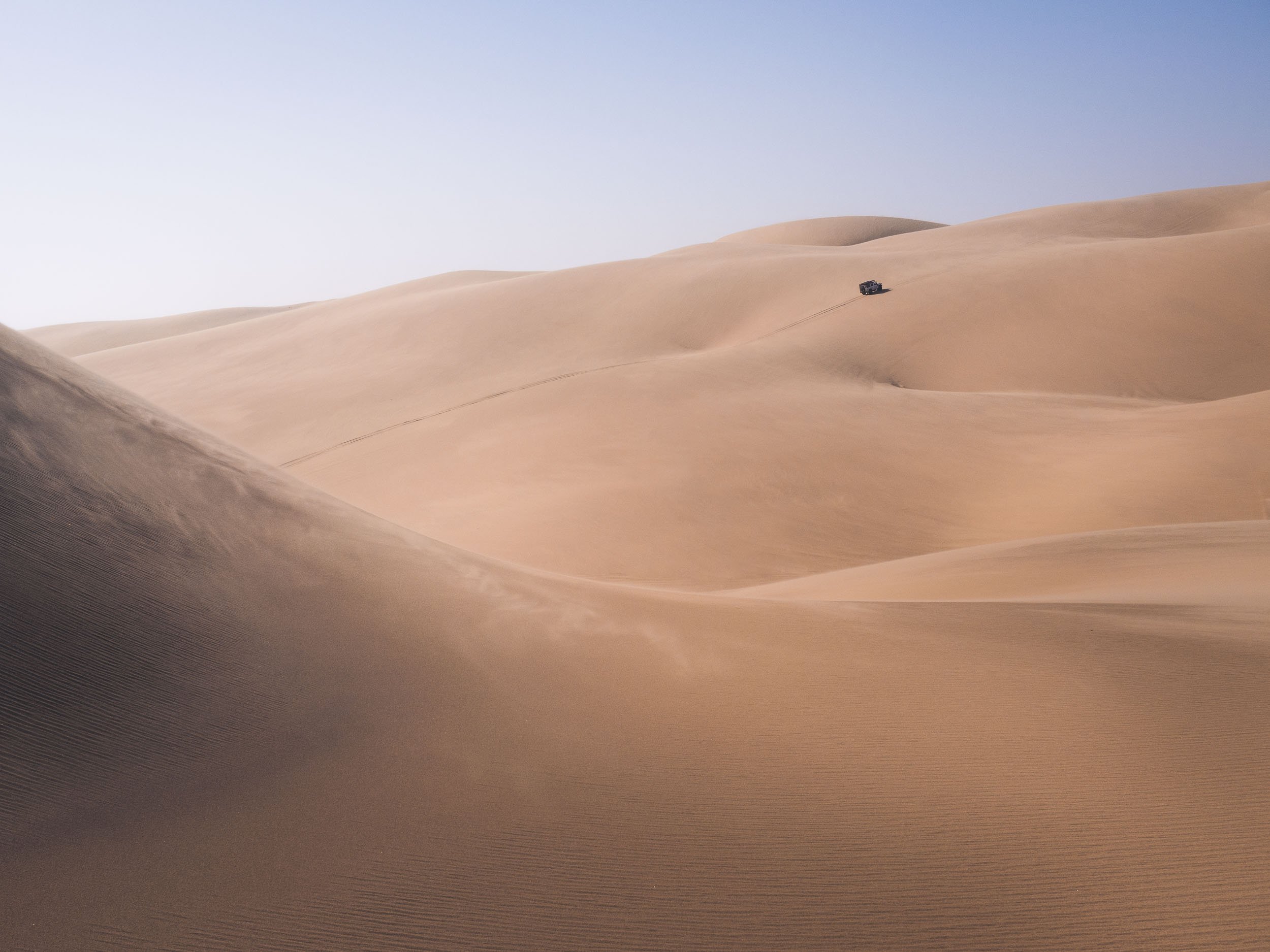
Dune Bashing
Definitely a fun way to cross the area.
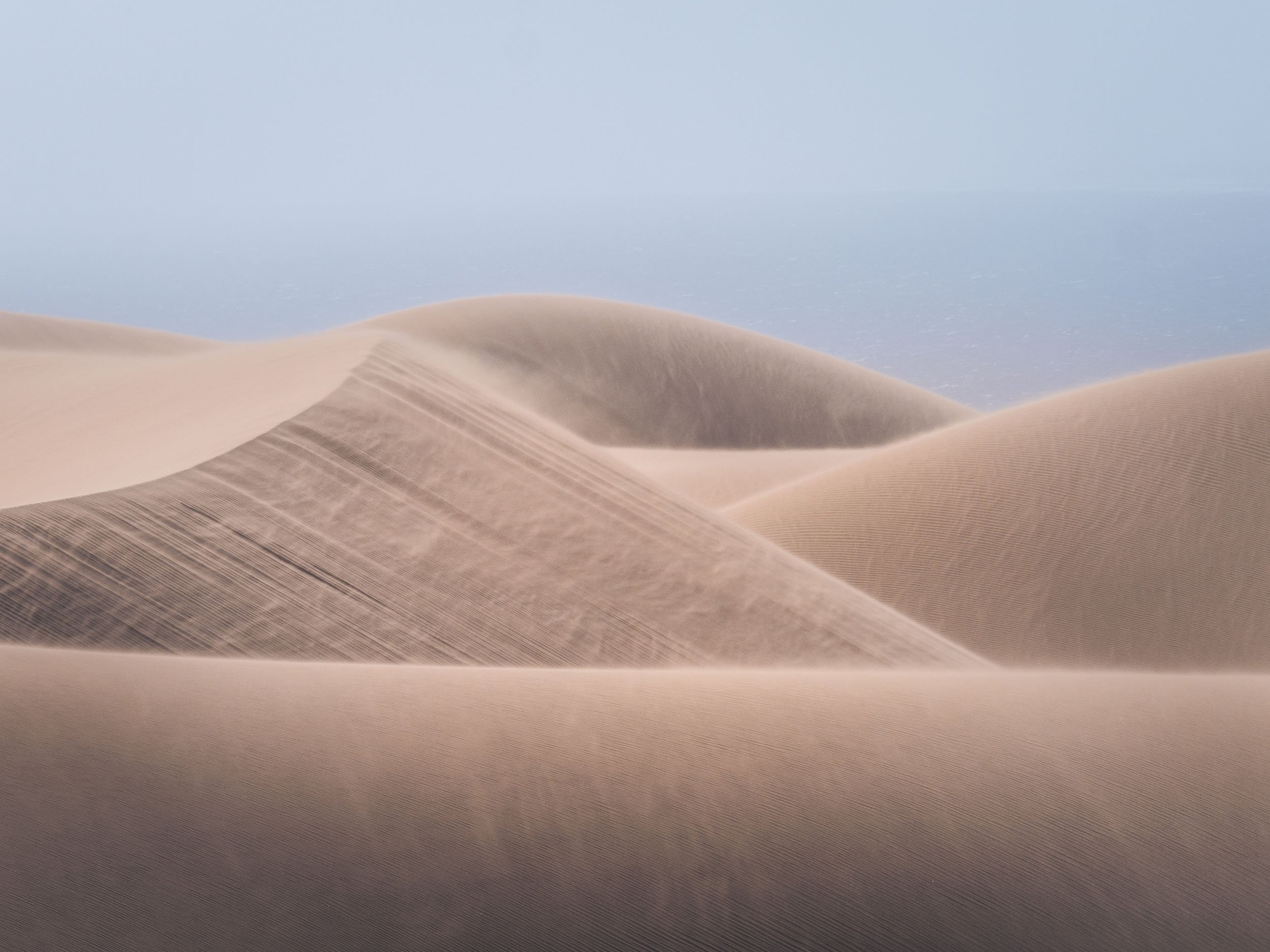
Sand & Sea
And where they come together.

Red Sands
Dark red patches can be found in many areas around the beach here, owing to the mineral composition of the sand.
The Spitzkoppe
or Africa’s Matterhorn, as they call it.
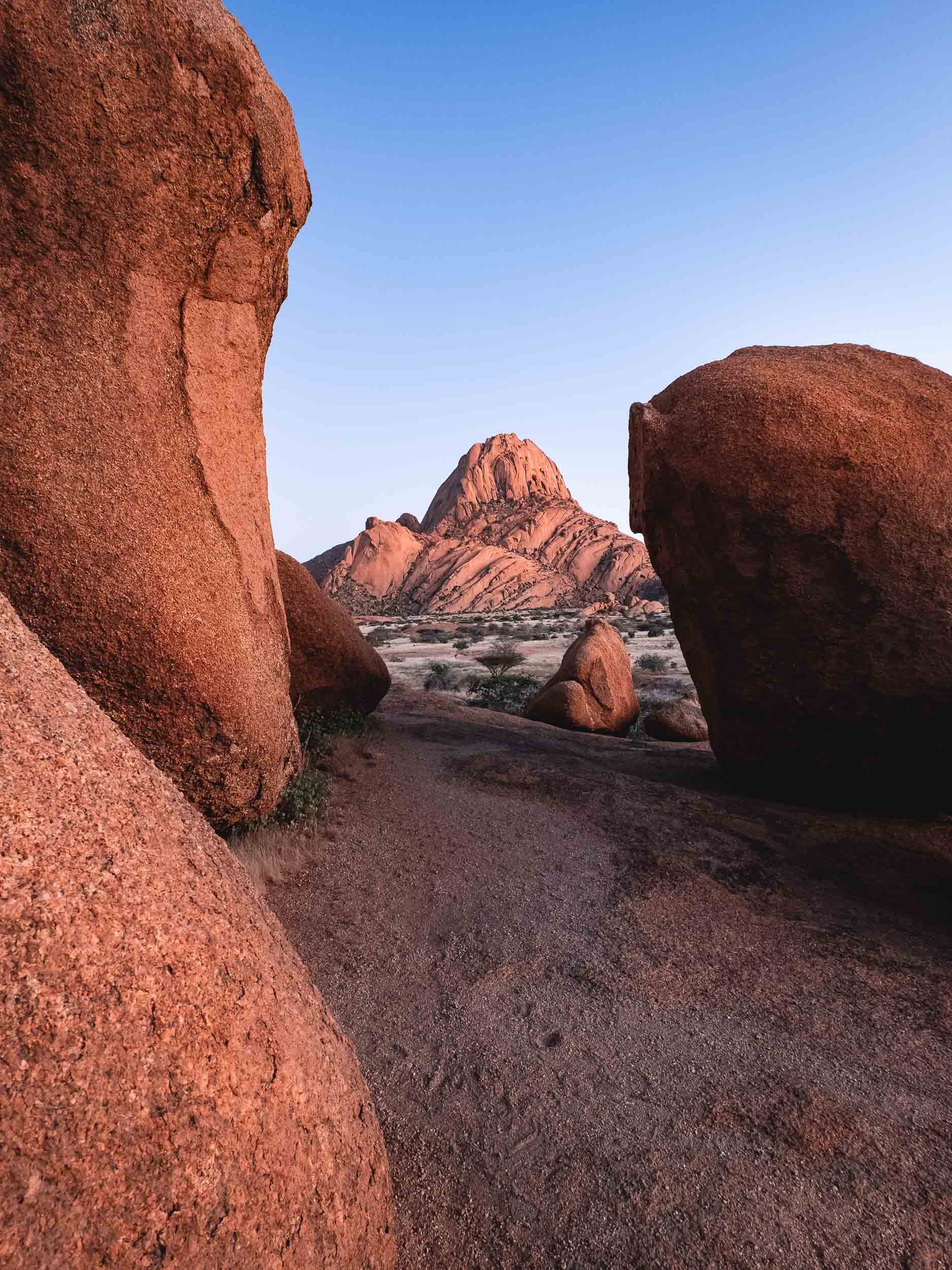
The Spitzkoppe
Namibia's most famous mountain range. The granite is more than 120 million years old and the highest outcrop rises about 1,728 metres above sea level.
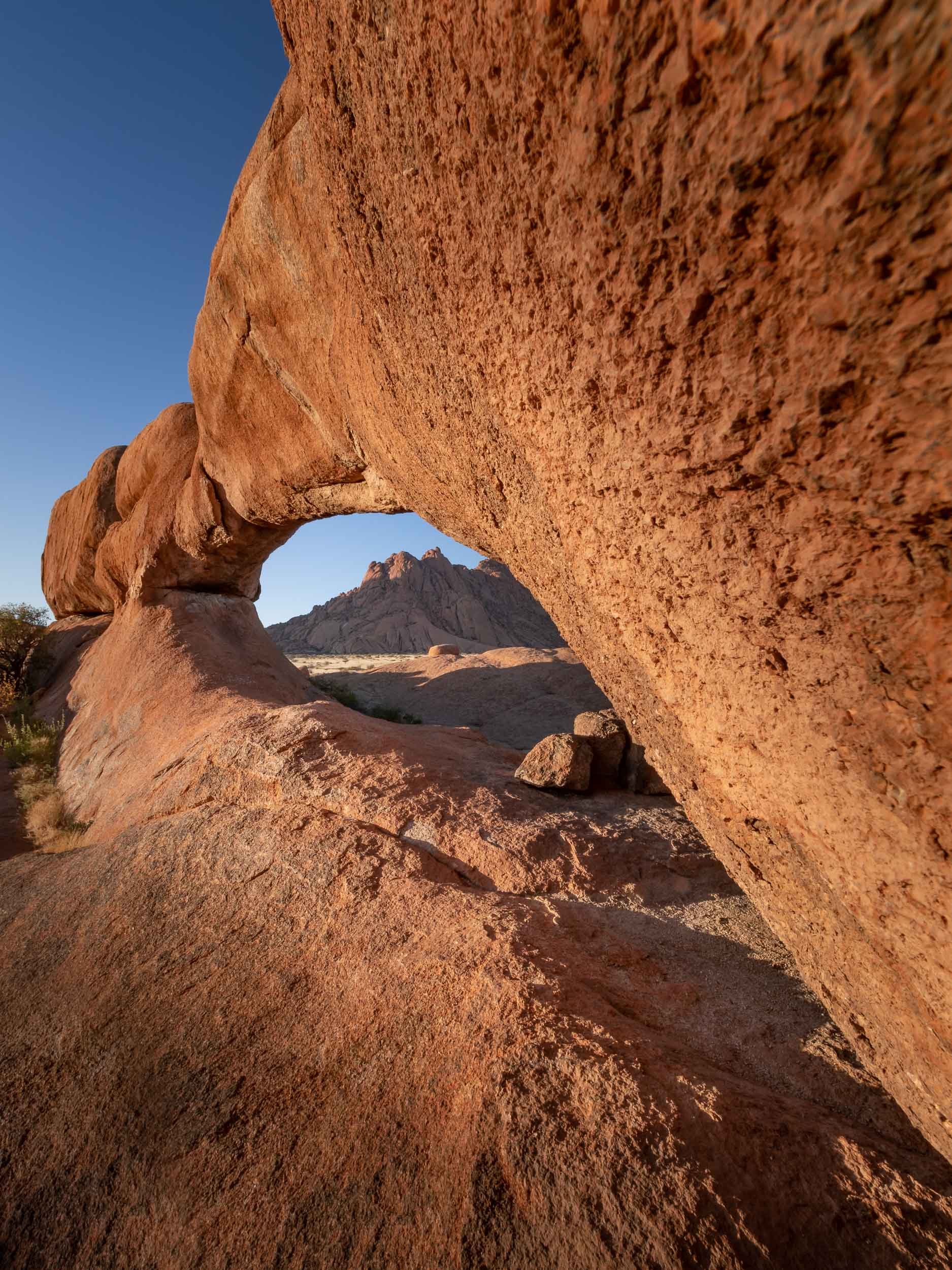
The Arch
The area features amazing formations such as this arch, which makes for some interesting compositions.
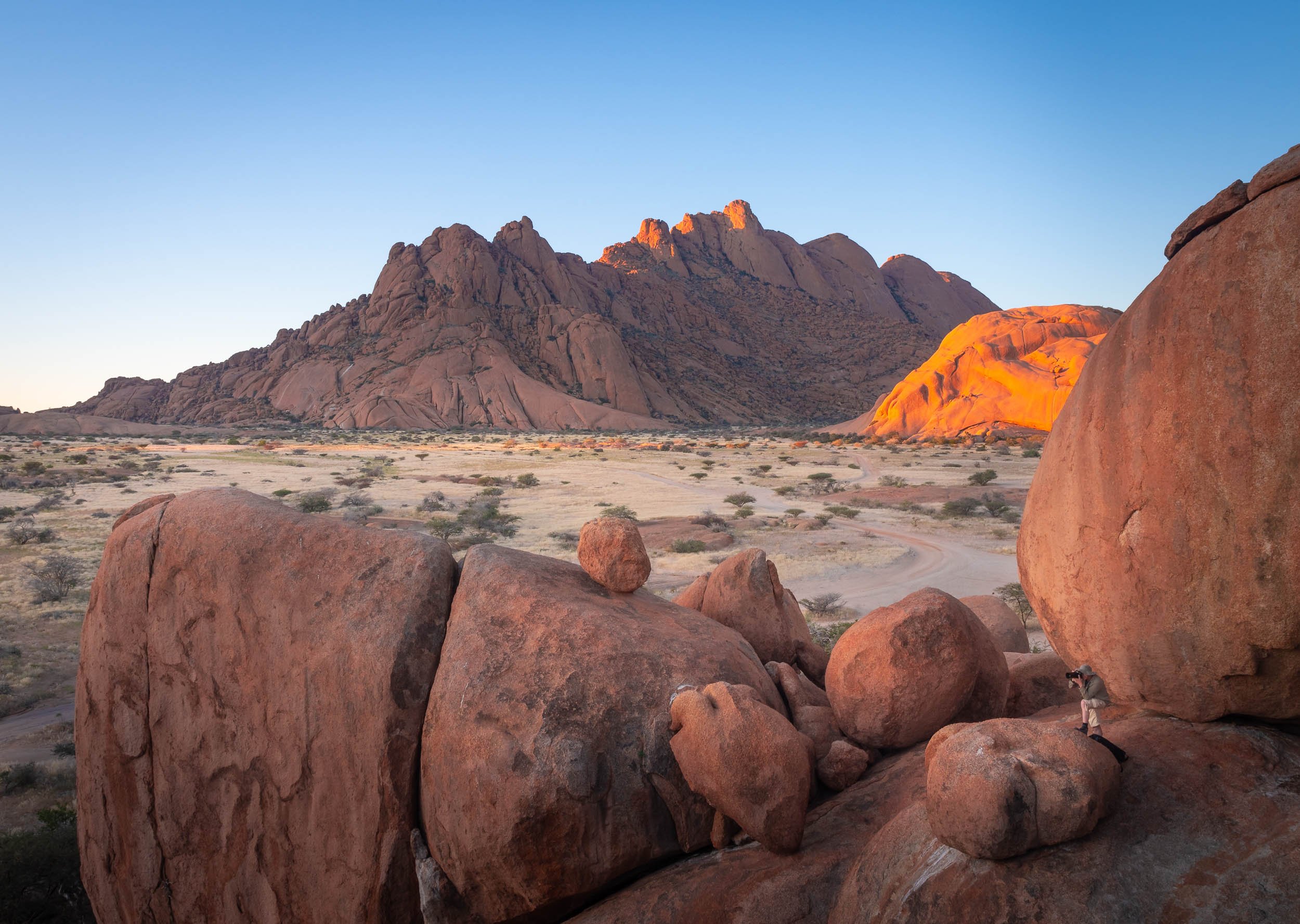
Scenery
The Spitzkoppe Mountains were also the filming location for 2001: A Space Odyssey - find the human in the image for scale.

Gate to the Stars
The Milky Way rising across the rock arch formation, illuminated from the back with a small LED light.

Lunar Illumination
The moon shining over the outcrops as the last bit of daylight disappears in the west.
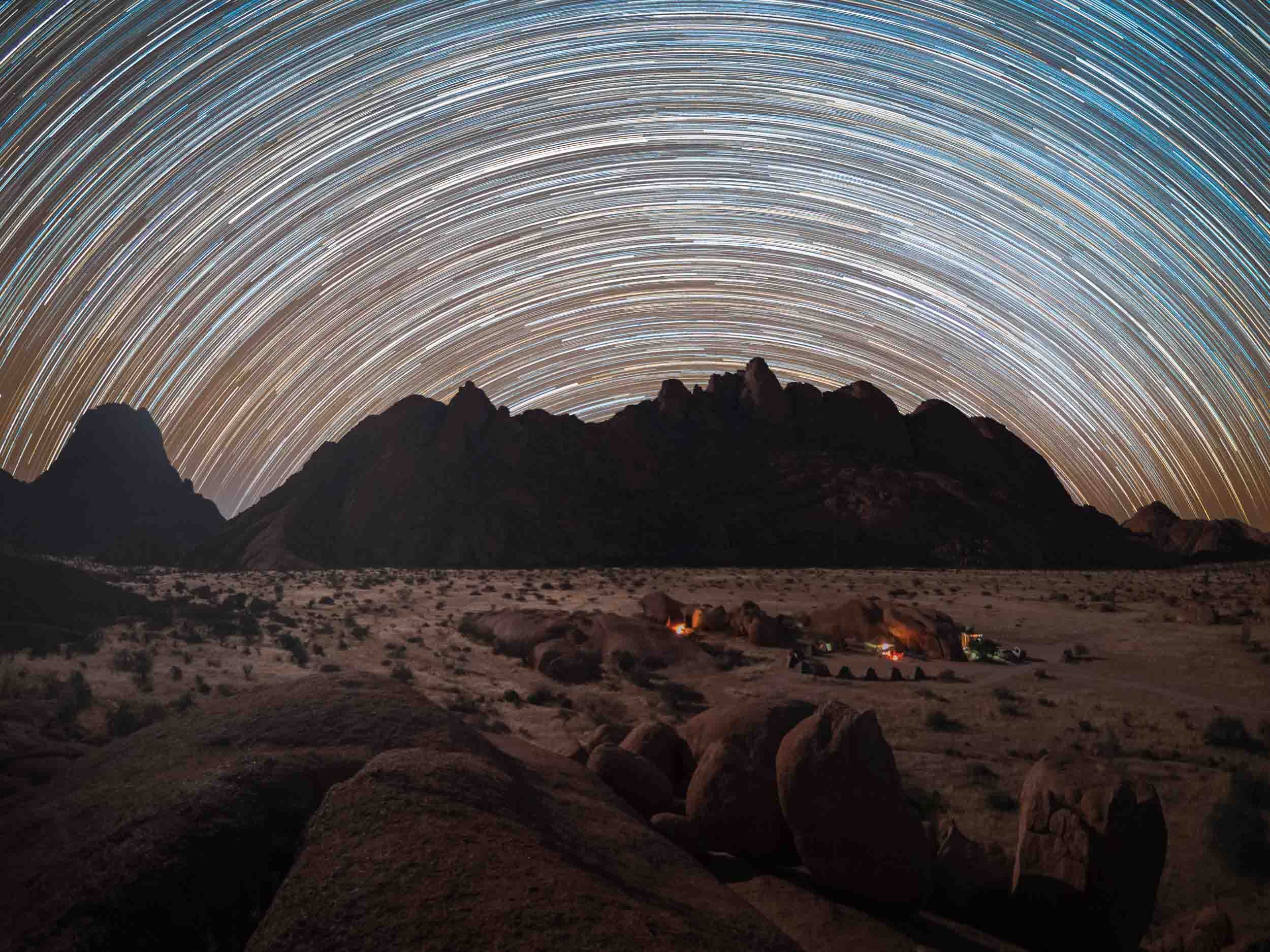
Star Trails
Photographing north over our camp for several hours created these trails as the earth rotates through the universe.
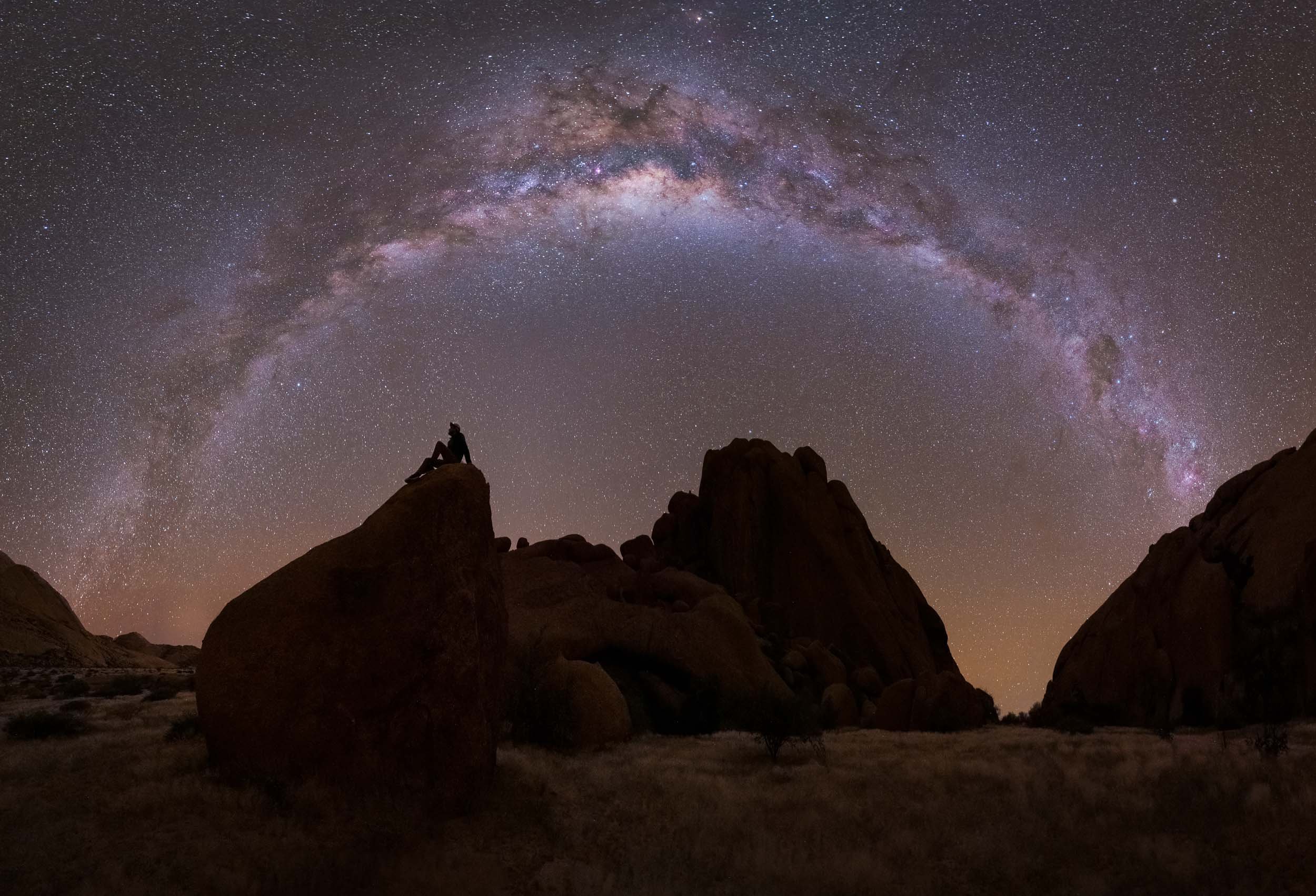
Watching the Stars
I climbed a boulder in the darkness, accompanied by a few questionable insects, after setting my camera on interval shooting to get myself into the frame of this panorama, composed of a total of 18 images.
Etosha National Park
Our last destination was in the northern part of the country for some wildlife viewing.
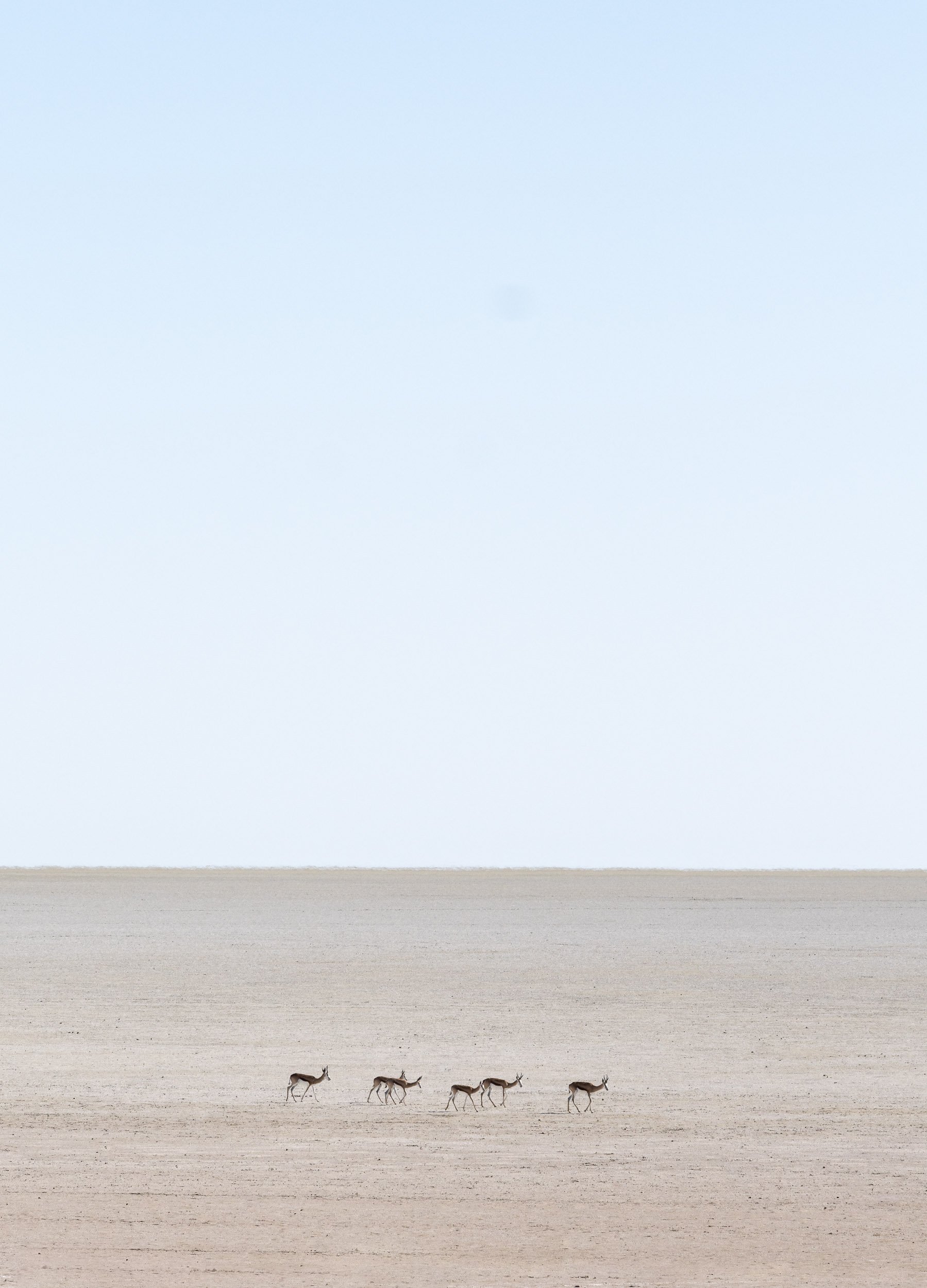
The Etosha Pan
The park is most famous for its 120km dry salt pan running through it, making for interesting contrasts with the savannah and its inhabitants.
Scroll through the gallery for some of the animals we captured during the 2 days.
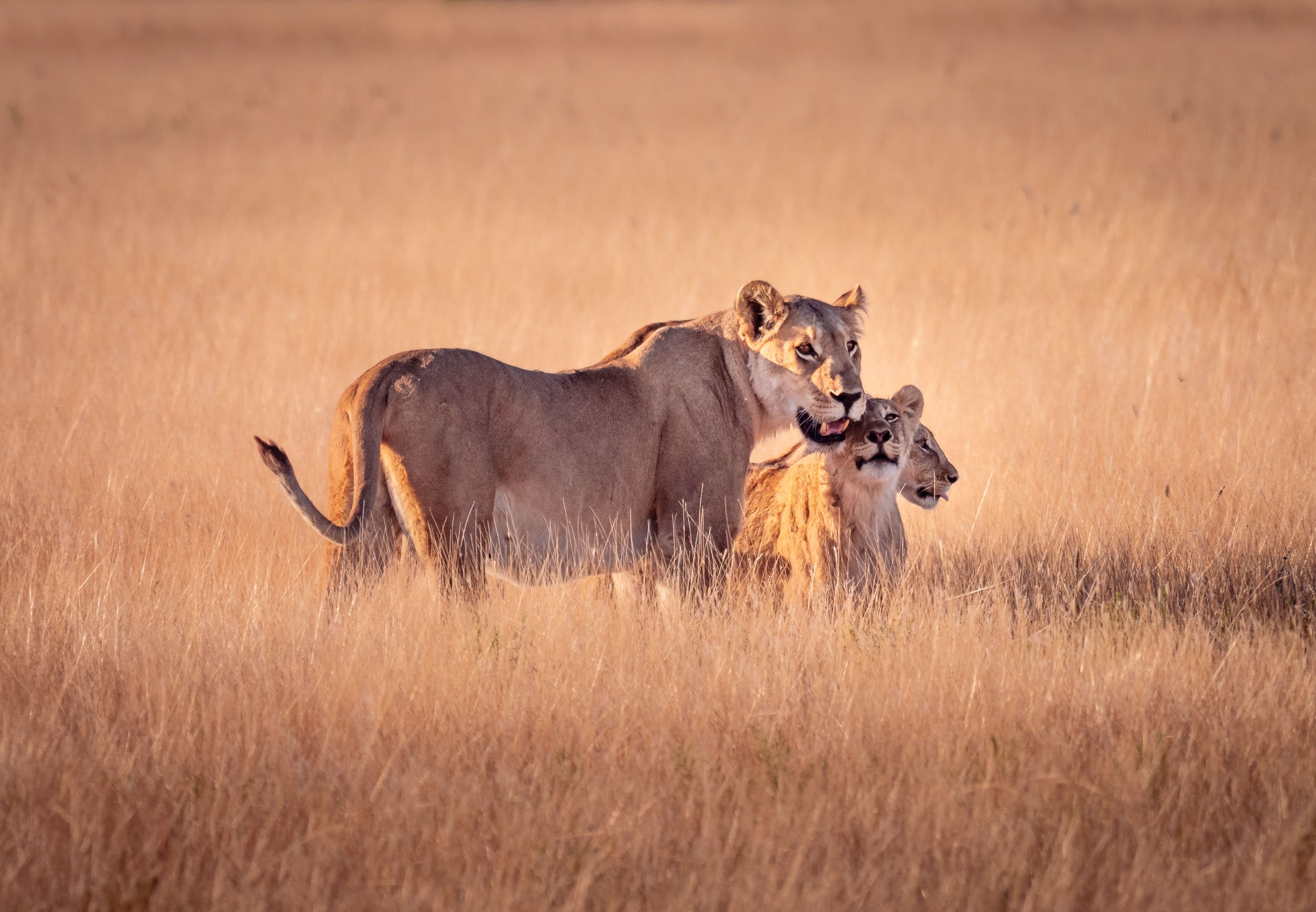

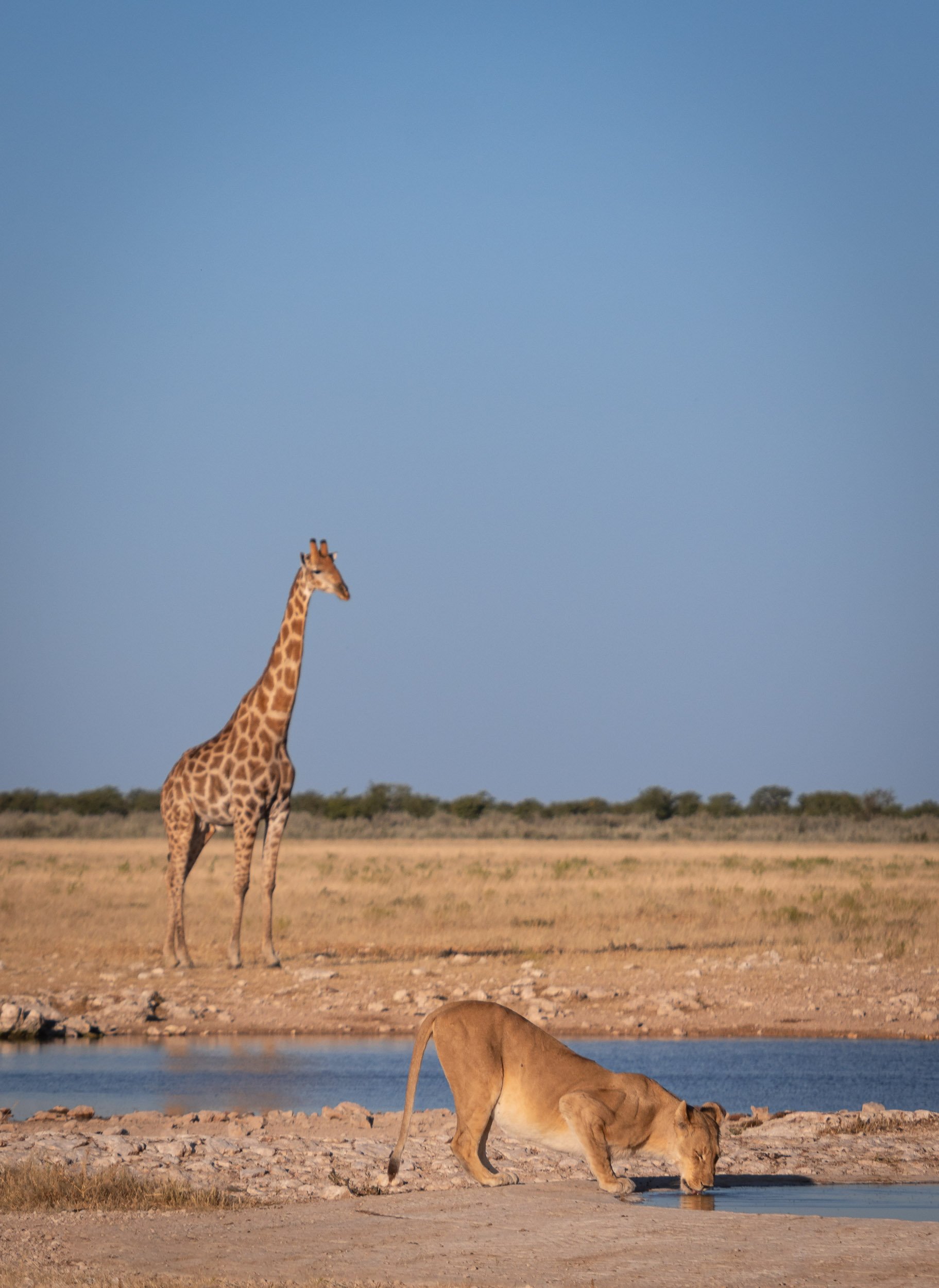
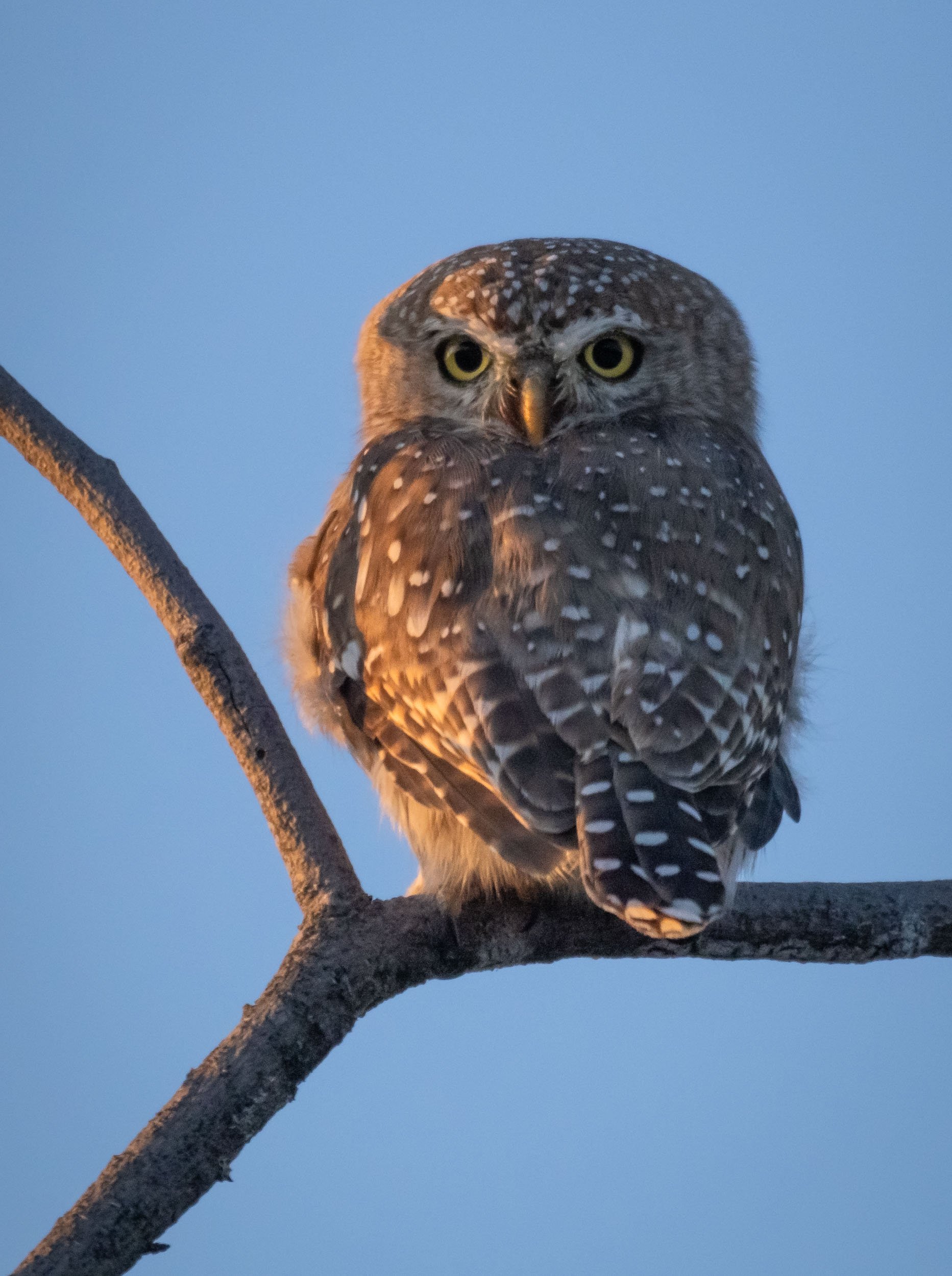
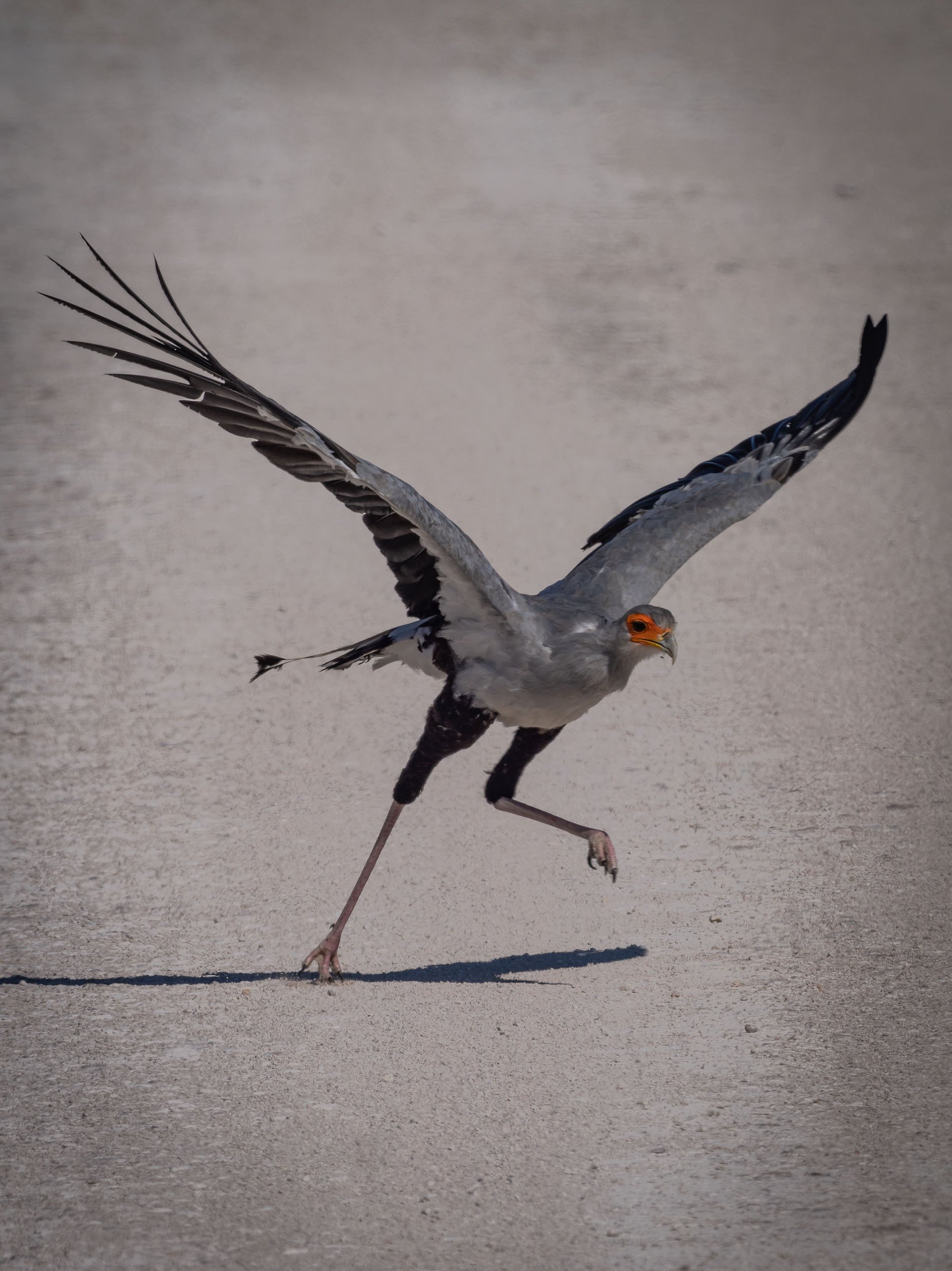
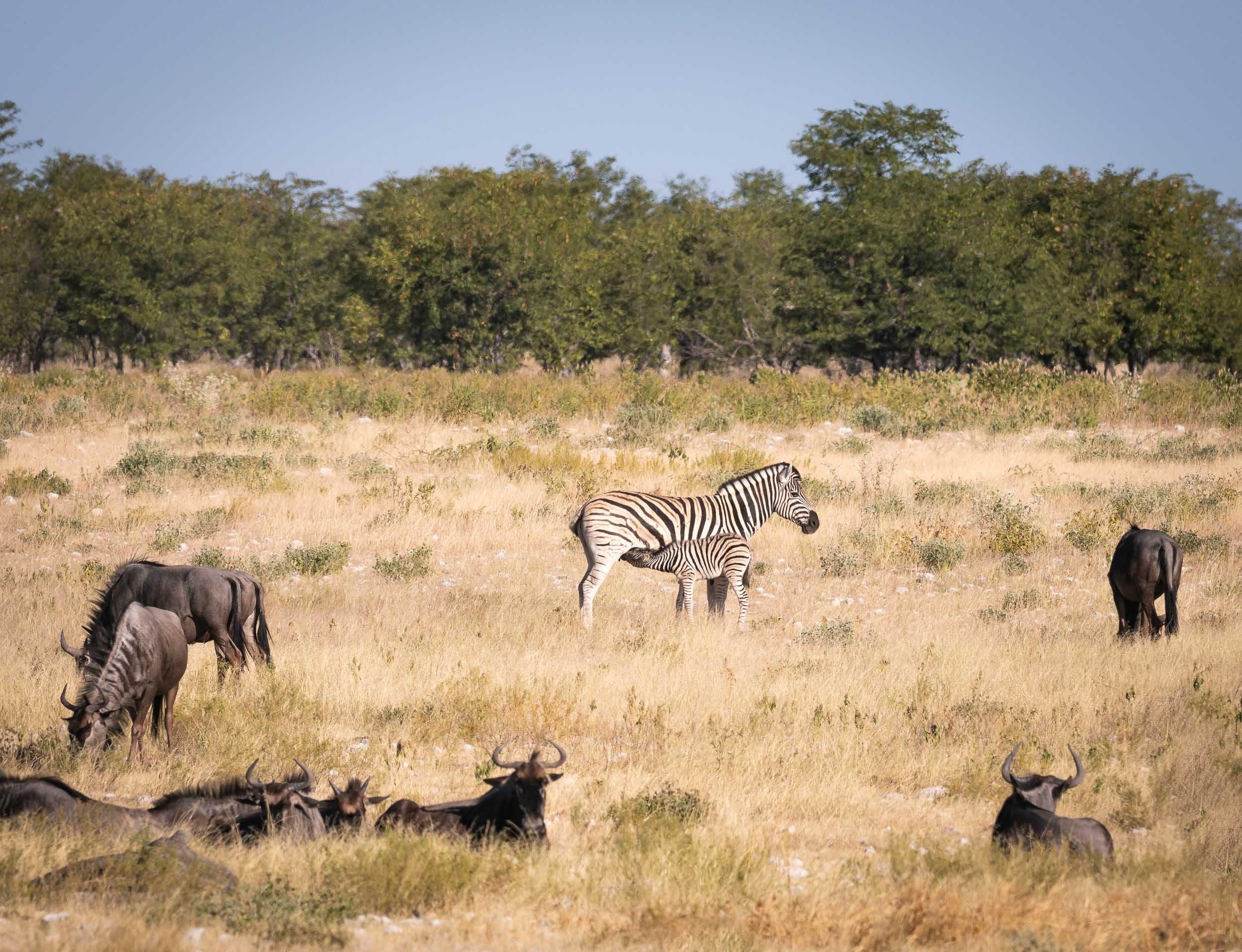


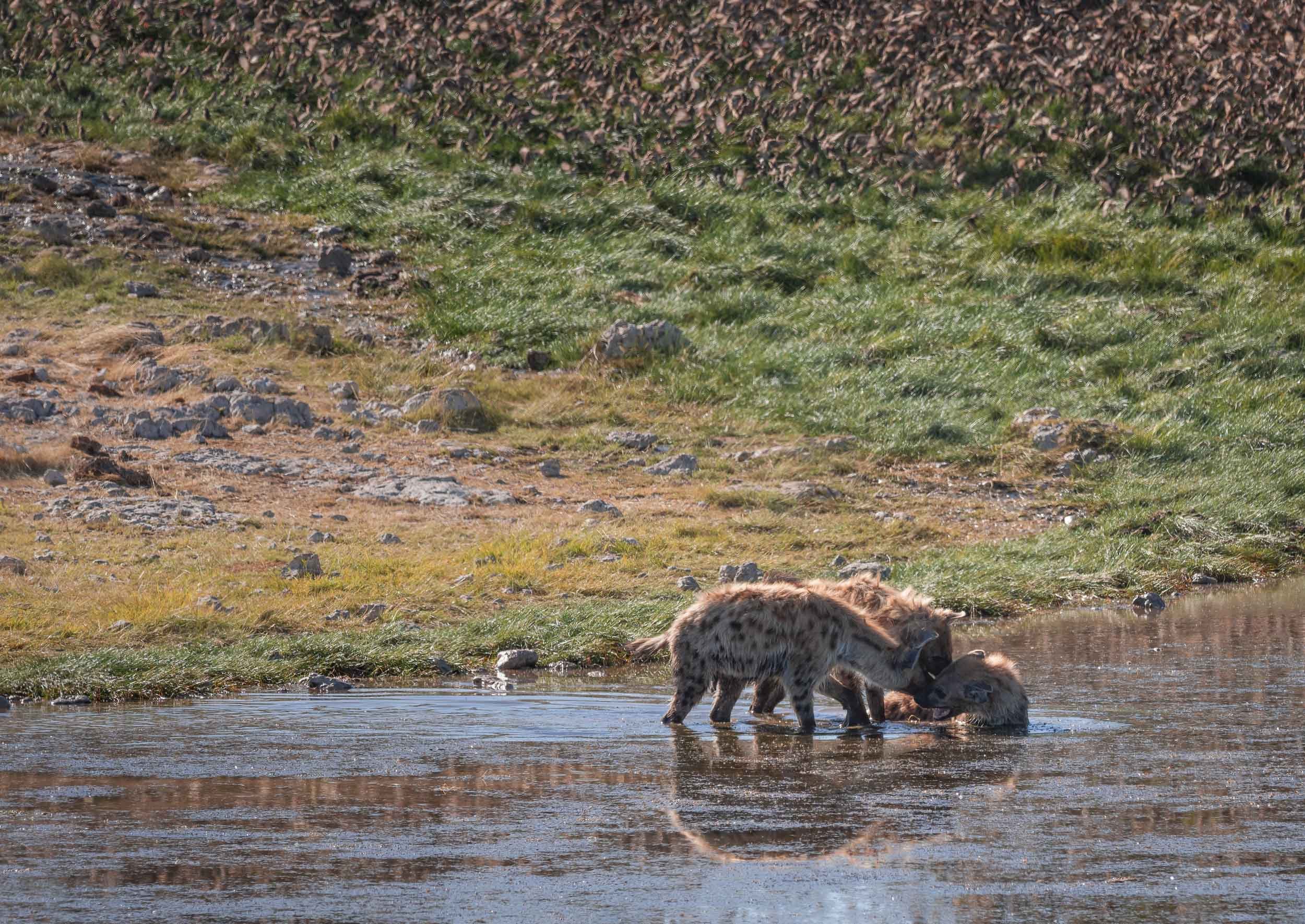









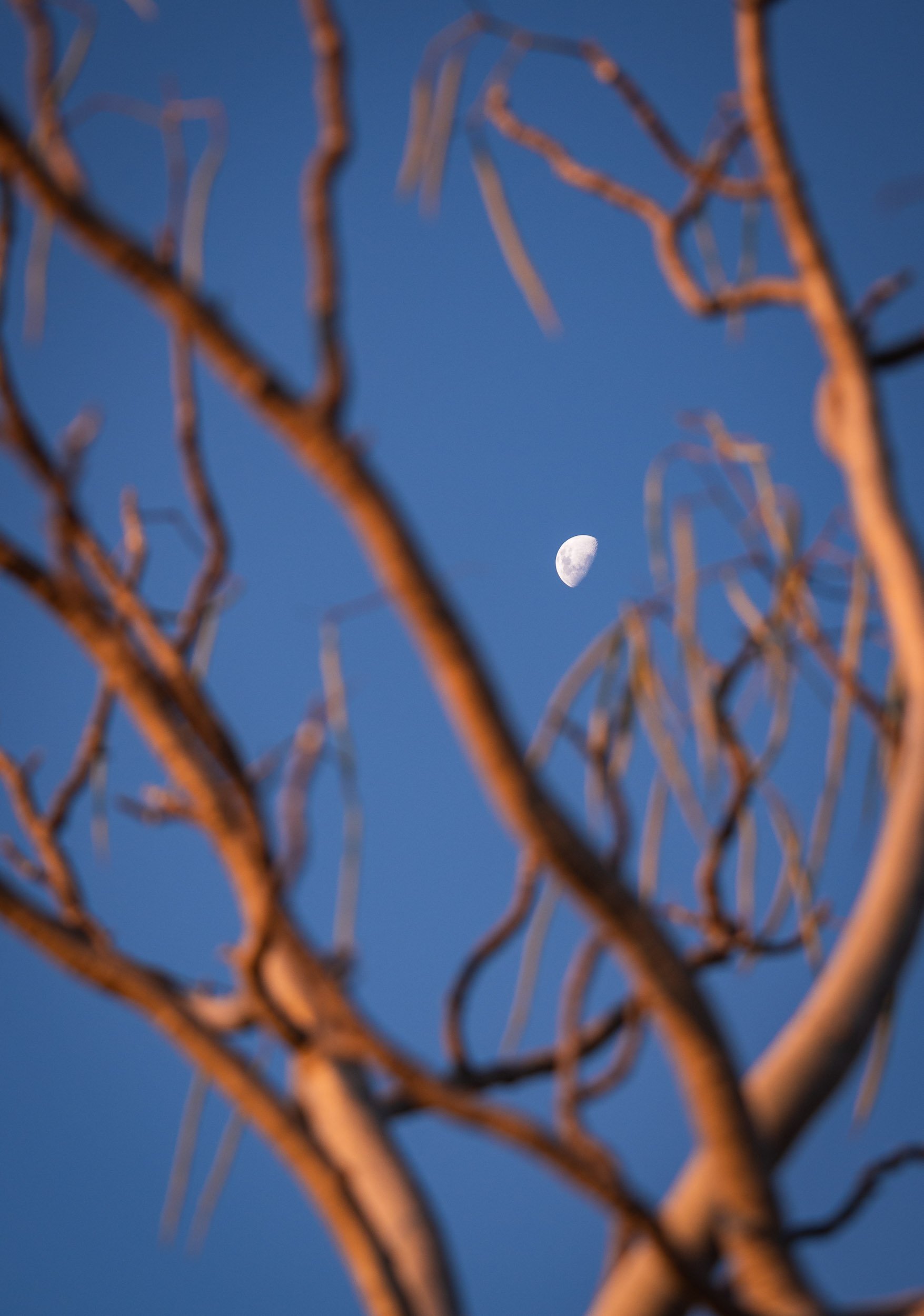
One Last Look at the Moon
Hope you enjoyed this journey of Namibia and its landscapes.